

Which Cruise Ships Have Underwater Rooms & Windows?
Have you ever wondered if any cruise ships have underwater rooms and if so do they have any windows?
This is quite a common question, and you can see why. The thought of seeing the underwater world so close up is seemingly pretty appealing.
Imagine seeing a shoal of fish, an octopus, a smack of jellyfish, or maybe even dolphins and whales.
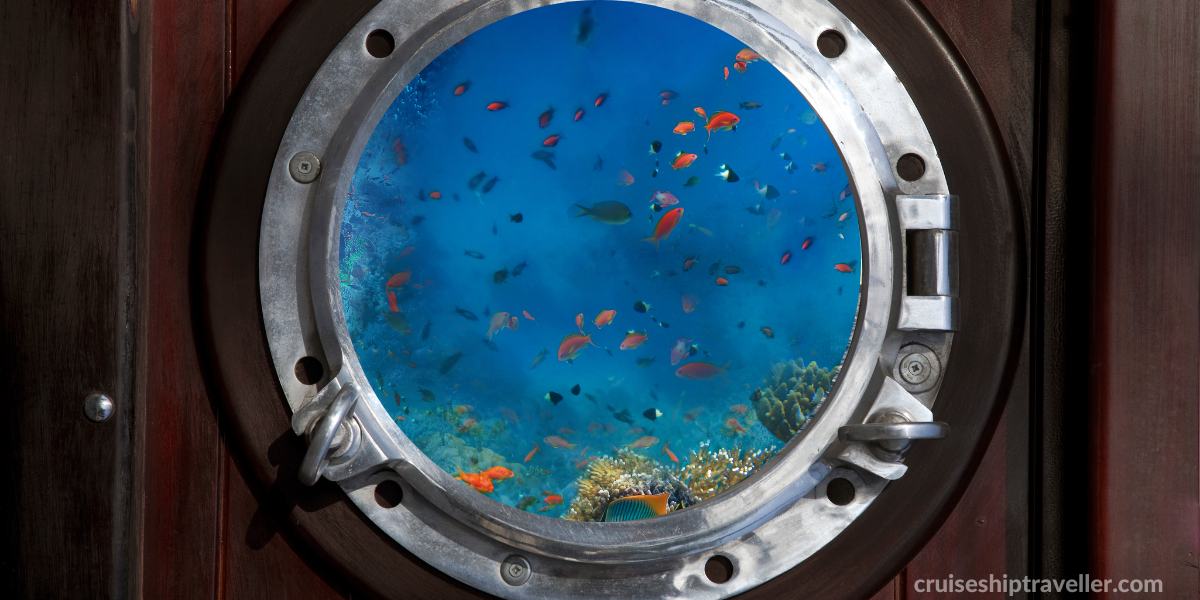
But is it feasible in reality?
Do any cruise ships have them?
If they do, what can you see from them?
Let’s take a look.
Do Cruise Ships Have Underwater Rooms?
There are many underwater rooms on a cruise ship, although typically, they are not staterooms booked out to passengers. They are generally rooms used by the cabin crew as well as rooms for running the ship, like the engine room and storage rooms.
Many rooms on the lower decks aren’t usually shown on deck plans that are out of bounds for passengers.
Even if some cruise lines start their deck numbers at Deck 1 for passengers, there will always be lower decks, some of which are underwater level.
The lowest passenger staterooms are usually on the deck just above the waterline.
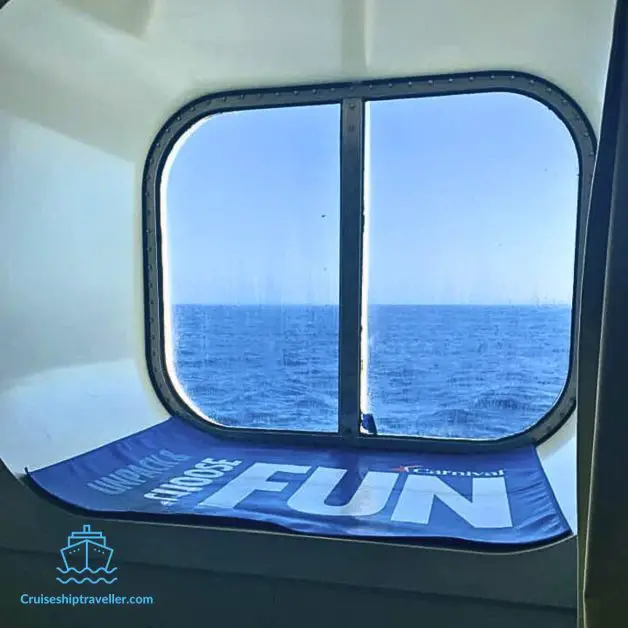
Many of the rooms are geared around the actual all running of the ship providing sleeping and private socializing rooms for the crew, storage of all the food and drinks, and many engine and plumbing-related rooms.
The lower deck rooms underwater level include :
- Crew cabins
- Crew social and dining rooms
- Fridges for fresh food
- Freezers for frozen foods
- Wine Cellars
- Engine Rooms
- Laundry Rooms
- Brig (Jail)
- Medical Center
Under Water Rooms for Passengers on a Cruise?
There are no underwater rooms for passengers on any of the main cruise lines. Only about 10% of a cruise ship is underwater and these lower decks are taken up with rooms and equipment required to keep the ship running as smoothly as possible and all out of sight of the passengers.
If cruise ships moved any of these rooms to higher decks, it might affect the passenger’s experiences in other ways, for example, who wants a brig or jail or cruise ship morgue on their deck.
Or to be next to a loud laundry room .
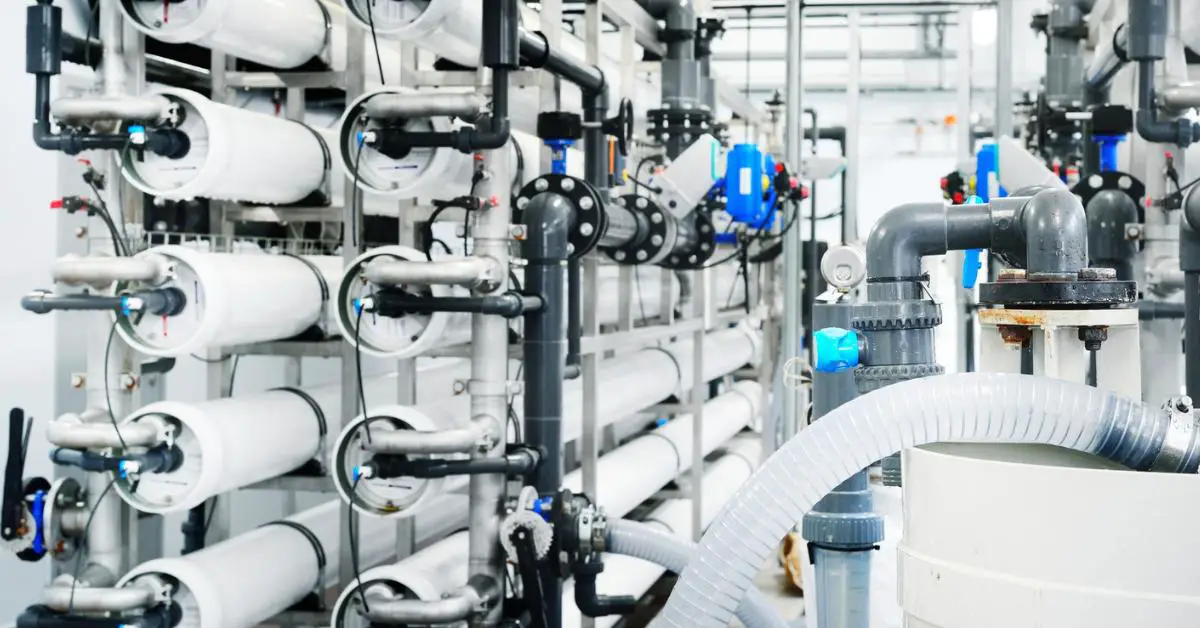
Do Cruise Ships Have Underwater Windows?
There are no underwater windows on a cruise ship with all staterooms above the water level.
There are a few reasons for this.
Firstly, if you have ever been on a glass-bottomed boat, you would know that when the boat is moving, all that can be seen through the glass is the rushing water the boat is passing through. Only when you stop the boat in calm waters can you see anything clearly.
It would be the same on a cruise, but tenfold when the cruise ship moves. Even when the cruise ship stops, it would often be in port areas where ocean views are not maybe as idyllic as you might expect. Also, that’s often when you will be getting off to explore.
There would also be issues of keeping the windows clear and clean, so you could see anything through them.
Another reason is that cruise ships are predominantly made of steel to withstand the pressures of powerful large waves, and replacing critical areas of the ship with much weaker glass, by comparison, starts becoming a potential safety issue.
Although when glass is used for underwater parts of the ship, it can be up to 18 layers thick as in the case of the Blue Eye Lounge.
The nearest you might get to an underwater window on a cruise ship is your stateroom is on a low deck in rough seas.
As you can see in the video below, taken from an Ocean View cabin on Carnival Pride. The sea waves are so large they submerge part of the cruise ship up to cabin level.
As an example, this isn’t far off what you could expect to see even if your room window was below water at all times.
Cruise Ship Underwater View

There is one new recent innovation by French luxury cruise company Ponant who recently launched six new explorer vessels featuring an underwater lounge in the hull of the ships below the waterline with windows offering a view of the water.
The 6 Ponant Explorers are:
- Le Bougainville
- Le Champlain
- Le Dumont-d’Urville
- Le Jacques-Cartier
- Le Lapérouse
Underwater Blue Eyed Lounge Room
The whole idea behind the design of the Blue Eye Lounge is that you are actually inside a whale looking out through eye-like portholes.
While you can’t see much when the ship is moving as the sea hits the bow, being expedition cruise ships when they anchor in remote areas such as the tropics of Africa and the Caribbean, the ocean views can be stunning.
Inside the lounge area, giant hydrophones transmit the sounds from the seawater outside the lounge to give you a truly immersive experience.
At night the lighting is at its bluest, attracting inquisitive wildlife to the ship.
In the video below, you can see the two whale eye-like portholes. At first, you see the water passing by, but when the ship has stopped, you can see a guest watching penguins swimming past.
While you can’t see much when the ship is moving as the sea hits the bow.
However, the ships are expedition cruise ships when they anchor in remote areas in the tropics, such as Africa and the Caribbean.
Are There Any River Cruises with Underwater Rooms?
Underwater cabins are more common on river cruises.
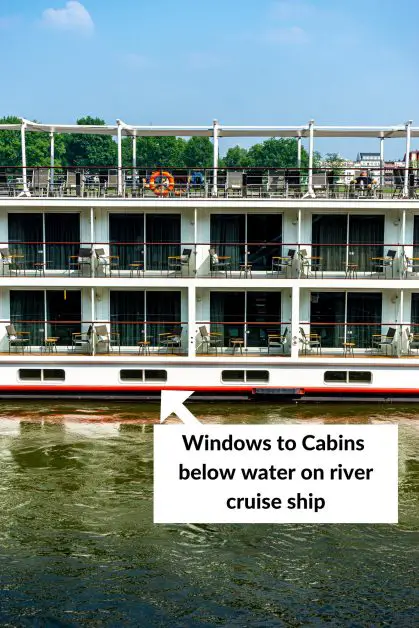
Viva Cruise sare an example of a cruise ship with cabins below the water.
The windows are around head height for the average person when standing and are just above the waterline.
In this video, you can see the underwater room from the inside and the square windows from the outside, which overlook the river’s surface.
Although the rooms are underwater, it’s not the underwater experience most people are looking for, and hence why these types of rooms are usually one of the cheapest on a river cruise.
Are There Any Bedroom Underwater Cruise Ship Rooms?
The only underwater bedrooms on a cruise ship are for the crew, which, bearing in mind some ships have 800-1000+ crew members, requires a lot of rooms.
Even if there were underwater bedrooms for guests on a cruise, the lower decks are not the best place to be on a cruise ship.
There would be all kinds of loud noises from engine rooms and all kinds of other machinery rooms to keep the ship running.
There are also things like being near the propellors, which are also very loud, or when the ships anchor drops.
While this might be okay for the crew, it would not be ideal for paying guests.
Related Posts
- How Do Cruise Ships Get in the Water? (The Way You Don’t See)
Frequently Asked Questions
Are there any luxury underwater cruise ship rooms.
The French luxury cruise company Ponant has six cruise ships that feature the Blue Eye Lounge. This is an immersive underwater room and experience like no other.
Limiting to a small number of people at any one time is a truly relaxing experience when the ship anchors and relaxing sounds are played. You can also hear the actual sounds from the ocean outside the two whale-eye-shaped port windows.
Is There an Underwater Room With Ocean View Cruise?
The Blue Eye Lounges are the only known underwater rooms with a view of the ocean. While relaxing in this blue-lit room, you’ll hopefully be able to witness all types of sea life, including fish and various swimming mammals you might expect to find in tropical waters, dolphins, and even penguins.
Why Don’t Cruise Ships Have Underwater Views?
Cruise ships don’t offer rooms with underwater views for various reasons. The main ones are that glass is not as strong as steel which is needed to withstand the constant pressures of the sea.
Secondly, the underwater decks are already fully utilised and serve the mechanical and crew needs of the ships.
Finally, for the vast majority of the time, there would be nothing to see other than passing water. Even when docked, it’s likely the waters would be murky.
So it wouldn’t be an experience worth marketing to a limited few.
It would be far better to take advantage of the sea views from the decks or balconies and save underwater ocean views for ships designed explicitly with that in mind, like the Ponants or a small glass-bottomed boat trip.
Although underwater rooms are not available on the most commonly known ocean-going cruise ships, there are smaller luxury market expedition cruise ships that do offer an underwater room experience.
River cruises also have rooms below the waterline, but the windows are above the surface, so they are not as appealing.
Your best option for seeing life in the ocean might be to book a glass bottom boat excursion which is designed purposely for comfortably seeing sea life in ideal locations.

What is the Draft of a Cruise Ship? (and Why Does it Matter?)

How Many Doors on a Cruise Ship? (Yes, I Counted)
Leave a comment cancel reply.
Your email address will not be published. Required fields are marked *
Save my name, email, and website in this browser for the next time I comment.
What Are Underwater Cruise Ship Rooms and Are Passengers Allowed In?
I personally love cruising and have been on a ship a few times. But have you ever wondered whether cruise ships come with underwater rooms?
The question is – what are they, and are you allowed in? Moreover, do they have panoramic windows to let you observe ocean wildlife?
Let’s try to figure out the answers, shall we?
Table of Content
- Crew cabins
Social and dining rooms for the crew
Fridges and freezers, engine rooms, laundry room, medical center, jail and morgue, why most cruise ships don’t have windows under water, can passengers book a room in the underwater part of a cruise ship , ponant le champlain, ponant le bellot, ponant le bougainville, ponant le dumont-d’urville , ponant le laperouse, over to you, what rooms can be found underwater in cruise ships.
Even if you’re not planning on spending time in the underwater cruise ship rooms, it still can be good to familiarize yourself with it. Learning about them can help you better understand how the ship functions.
So here’s the list of the rooms:
- Crew cabins
- Social and dining rooms for the crew
- Fridges and freezers
- Engine rooms
- Laundry rooms
- Medical center
- Jail and morgue
Now let’s discuss their functions.
As you can guess, these rooms are where the crew members stay. Depending on the ship, cabins can be located below the waterline or totally submerged.
But unlike the passenger rooms, the crew cabin isn’t spacious and fancy. Instead, these rooms are narrow and only include essential features.
You can get an idea of how they look from this picture:
Here, crew members share dorm-like rooms based on their department. These crew cabins also have access to shared bars, eating rooms, and gyms.
Usually, two members share one room, but bigger cabins for more individuals are also available. Bunk beds are the standard type of bedding as it enables more members to sleep within a confined space. So basically, each square foot matters on a ship.
For privacy, some ships add curtains on the bunk beds. Other noteworthy characteristics are TVs, storage space, a private bathroom, shelves, and a cooler.
The members with a higher rank have private cabins with windows and more amenities.
More commonly known as crew messes, these rooms serve breakfast, lunch, and dinner for the crew members. Al their meals are made in the crew galley, which is on the same level.
This room is also a great opportunity for the staff to socialize and get a quick break from their duties.
Here’s what it looks like:
The crew members line up and choose the food they want, similar to a high school cafeteria. However, newer ships are progressing towards having seating booths that resemble a restaurant.
The dining room is also where the crew members can hang out. It is like a buffet and is usually pretty large. Just so you know, there are different places for the crew to eat, depending on their rank.
Finally, there’s usually a TV in the underwater dining room so the crew can catch up on their favorite shows while enjoying their meal.
Cruise ships usually have mini bars with fridges and freezers that store food and drinks. For example, some refrigerators are for beverages and snacks that passengers order for room service delivery.
On the other hand, some freezers are workstations for crew members. For instance, in the fish freezer, fishmongers are responsible for cleaning and cutting the fish, while butchers cut the meat from the beef freezer.
You can see the freezer here:
The refrigerator system is truly critical as it carries refrigerated victuals and cargo for the passengers and crew members. Refrigeration ensures that food is fresh at all times. Plus, it prevents oxidation and the spread of germs.
These underwater rooms are definitely the heart of a cruise ship. This is where the hammers, pistons, and crankshafts rotate to make the vessel progress ahead.
No other room is as important as an engine room, which looks like this:
The engine room is located above the keel to ensure stability, which means that the ship’s lowest deck is completely dedicated to machinery.
Instead of a long hall spreading in the hull, the machinery of the engine room is segmented into tiny watertight departments. One area might feature air conditioning, whereas the other compartment can include main engines. That’s why engine rooms are a minimum of three decks high.
The laundry room is particularly useful for worldwide cruise travels, in which the individuals can wash, dry, and iron their clothes. Moreover, parents with children can also take advantage of these facilities.
Here is what the room looks like:
All the leading cruise lines offer wash, press, and ironing facilities in the laundry cabin. These self-service launderettes are a one-stop destination for washing your clothes.
Plus, laundry rooms are usually situated near passenger rooms, so you won’t have to lug a basket of clothes several decks down.
We’re humans and can get sick anytime, even on the water. So what can passengers do in such an emergency?
Worry not, as a separate medical center is available on all cruise ships for this purpose.
Here’s how they look:
With these medical centers on the ship, you’ll always have a team of professional medical personnel available to help you with whatever you need. They provide top-quality emergency medical care to all passengers. Most cruise ships include one or more doctors with nurses for their assistance.
The medical center commonly includes beds and is situated on the lower decks, away from the crowds. Finally, the onboard medical care treats scrapes, sunburn, seasickness, and much more.
Did you know that there’s a jail on the ship? Oh, yes! There’s a small jail on the vessel called the brig. Whoever becomes a threat to other passengers or violates the law will be sent to the cruise jail.
Like the medical center, it’s also located away from the crowds – in the crew-only areas.
Here’s what it looks like:
Brig guarantees passengers’ safety until law enforcement can tackle complicated issues once the ship arrives at the shore.
And morgues also exist on these vessels, in case you were wondering.
Big ships include a designated morgue if a passenger passes away during traveling. Cruises are equipped to hold dead bodies until the ship arrives at a port big enough to return the deceased bodies to their homes.
Sorry to burst your bubble, but underwater cabins usually don’t come with windows, and let me tell you why.
- The sea water isn’t very clear down there because of engines working and stirring up the water.
- Glass windows require continuous cleaning, which costs a lot.
- With time, glass windows can get scratched.
Due to these reasons, underwater windows are made of three-ply tempered glass laminate adept at tolerating pressure.
As mentioned above, the lowest decks are primarily intended for crew members, who eat in the crew mess, manage the engine room, sleep in their designated cabin, and so on.
All the rooms below the waterline are responsible for running the ship and account for 10% of the total area.
However, underwater rooms for passengers are usually available on river cruise ships. The windows are at head height when travelers are standing and are only above the waterline.
You can grasp an idea of what these cabins look like from the video below:
These are the cheapest rooms on the ship, and some people call them aquarium class because it’s like you’re living in a fishbowl.
Cruise Ships with Underwater Lounges
Even though I told you that most ships don’t have underwater rooms with panoramic windows available to the passengers, some explorer ships still offer that option.
In particular, cruising company Ponant has introduced such vessels to its customers. They have underwater lounges below the water line, where you can observe the wildlife while enjoying a tasty drink.
Sounds exciting, doesn’t it?
Now, let’s take a closer look at these ships.
First up, Ponant Le Champlain belongs to the Ponant Explorer series, which unravels remote locations. Its sustainable and innovative infrastructure guarantees an elite atmosphere, so you can expect low-profile luxury.
Here are the core characteristics of this ship :
- Can accommodate184 guests.
- 92 staterooms & suites.
- 2 restaurants.
- An underwater bar.
In addition to the stunning views of ocean life, the underwater bar also offers a variety of delicious drinks and snacks. Whether you’re looking to relax with a cocktail or two or are interested in trying something new, trust me, this would be your favorite place to do it.
Check out this walk-through video to get an idea of how awesome it all looks:
This expert from Harr Travel points out that, although Le Champlain is a “smaller” ship, there is still plenty of room on board, and you won’t feel cramped or crowded, even during mealtimes or when you’re getting off the ship to explore.
Featuring the latest equipment, racing lines, a pleasant ambiance, and contemporary architecture, Ponant Le Bellot presents minimal cabins to maximize the best experience for all onboard.
Here are its prominent features:
- Eco-friendly sailing.
- Terrace or balcony with each unit.
- Spacious rooms.
There’s also the Blue Eye – a multi-sensorial underwater lounge that can simultaneously accommodate 40 passengers. You can take a closer look at it in this video:
This is the Blue Eye – a multi-sensorial underwater lounge that can simultaneously accommodate 40 passengers.
And if you want to learn more about what this ship features in general, check out this walk-through:
As the only flaw, the reviewer stated that the balconies do not have a glass fence like most other ships, so you cannot see through it. But on the other hand, when you get up from the chair, the view is enchanting!
The next on my list is Ponant Le Bougainville , which comes with the following features:
- Open-to-the-sea design.
- A marina to access the ship’s Zodiac inflatables easier.
- An outdoor pool.
- An underwater lounge.
Speaking of the underwater lounge, this is a unique and exciting place to enjoy the underwater world and drink some tasty cocktails. It has a clear glass bottom that offers a stunning view of ocean life.
And here’s a solid review of Ponant Le Bougainville by the passenger named Sheila:
According to Sheila, the ship offers minimum entertainment, so don’t expect a casino or many children amenities. But, on the other hand, she’s very pleased with the underwater lounge.
I couldn’t wait to present you a Ponant Le Dumont-d’Urville, which is a rare delight with its many on-site comforts, some of which are as follows:
- Hi-tech equipment.
- A multi-sensorial underwater lounge.
- Comfy bedding and armchairs.
The underwater bar on this Ponant ship is a truly special experience. Guests can sit at the bar and watch the underwater world go by through the huge windows. So impressive, isn’t it?
Ponant Le Dumont-d’Urville has excellent onboard facilities that you’ll absolutely love. My best friend had her honeymoon here, and she can’t stop talking about it.
I know you’re excited to see a walk-through video of this beauty (including the underwater bar), so there you go:
This video covers just about everything, including the cabins, which are very luxuriously decorated.
Finally, answer this question – can you imagine the highest luxury with cruise exploration?
This is what Ponant Le Laperouse can offer you – and even more than you can imagine!
These are its main features:
- A theatre, pool deck, panoramic lounge, and wellness center.
- Terrace or balcony.
- Tasteful interiors.
The panoramic lounge is spacious and comfortable, and it has a bar where you can order drinks. It’s the perfect place to unwind after a long day of exploring the ship and enjoy watching the ocean’s flora and fauna.
And here’s a video of a happy passenger enjoying the lounge (and showing us the rest of the ship):
This passenger sailed on Ponant Le Laperouse around New Zealand and was impressed with such a rich offer. There are even 92 cabins – each one with a balcony and breathtaking views.
I hope you enjoyed learning about underwater rooms for passengers offered by cruise lines.
To wrap up, these are the rooms in all underwater decks:
- Social and dining venues for crew members.
- Jail and morgue.
- Freezers and refrigerators.
- Medical center.
- Laundry rooms.
- Engine room.
Although most cruise ships don’t offer panoramic underwater lounges, there are some explorers, like the ones I’ve listed, that still let you enjoy the rich oceanic world.
Did you have fun reading this article? I have more of these on travel topics, so go check them out on my blog ! Thank you for reading!
Similar in blog

My 24 Travel Essentials for Women to Make Your Journey Safe and Comfortable
Ladies, 2023 is almost upon us and you know what that means? New Year's resolutions and new travel plans. Isn’t it exciting? But while traveling is…

Consider These 8 Backpacks with Pockets if You Prefer to Travel Light
What is one must-have feature in a travel bag? For me, there’s only one answer here - lots of pockets. Back in 2015, when I started…

A Full Guide to a Stress-Free Kayaking Session for First-Timers
What is your favorite way to spend time on the water? For me, it is kayaking. I love the feeling of gliding through the still waters…

Dreading Cold Winters? Escape to These Places Where It’s Summer Right Now
The thought of snow, ice, the darkness outside, and freezing temperatures has always made me feel blue. I know some people love the way snow sparkles…

Lagree Fitness vs. Pilates – Which Workout Style Is the Best for You?
Are you planning to be more active this year? If yes, you are not alone. Statistics demonstrate that 23.4% of the entire US population (331M) works…

Underwater Cruise Ship Rooms: Are They Real?
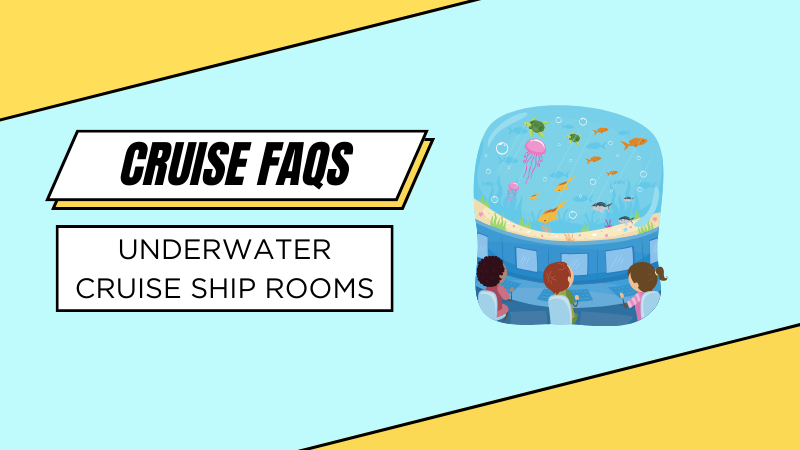
Imagine sailing in the open ocean, surrounded by nothing but azure waves and distant horizons. Now, picture going to bed and waking up beneath the water, greeted by a mesmerizing display of marine life swimming right past your window. Underwater cruise ship rooms take your cruise experience from the deck to the depths, offering a unique twist on traditional cruise accommodations.
But have you ever wondered what it’s like below deck? Understanding the layout of cruise ships below the waterline not only satiates your curiosity but also reveals a world you might never have known existed. So, come aboard as we delve into the enigmatic world of underwater cabins, lounges, and more.
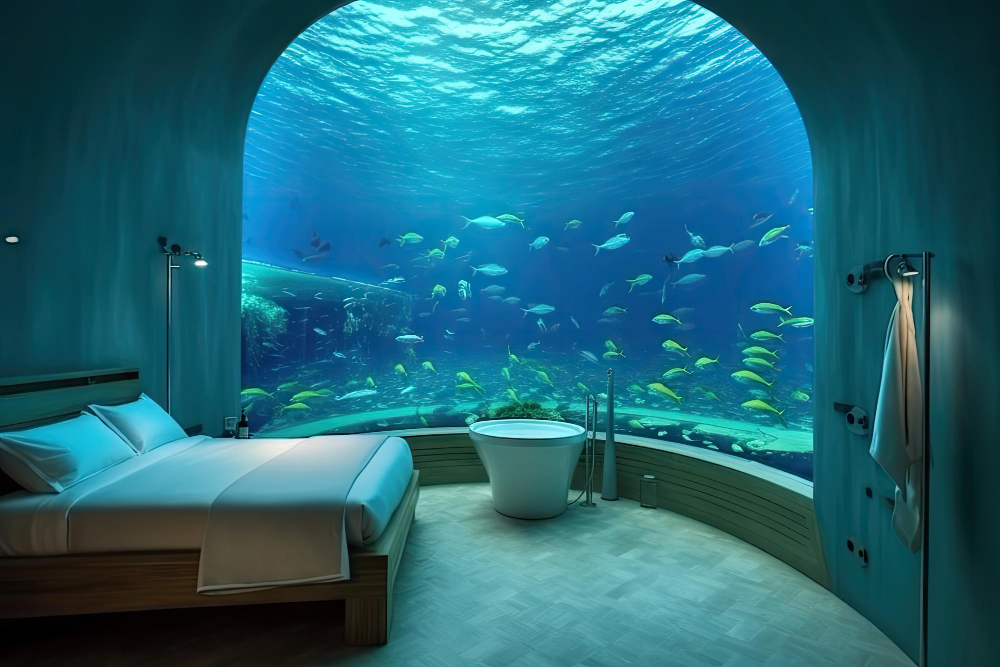
Do Underwater Cruise Ship Rooms Exist?
The concept of underwater cruise ship rooms often conjures images straight out of a science fiction movie—think luxurious suites surrounded by a 360-degree view of the ocean’s depths. However, let’s dispel the myths and unfold the reality. Contrary to popular belief, traditional ocean cruise ships generally don’t offer underwater rooms where you can sleep surrounded by marine life.
So, what’s actually below the waterline? Well, that would typically include engine rooms , storage rooms , and crew cabins . These essential areas keep the ship running smoothly and are far from the plush underwater suites one might imagine.
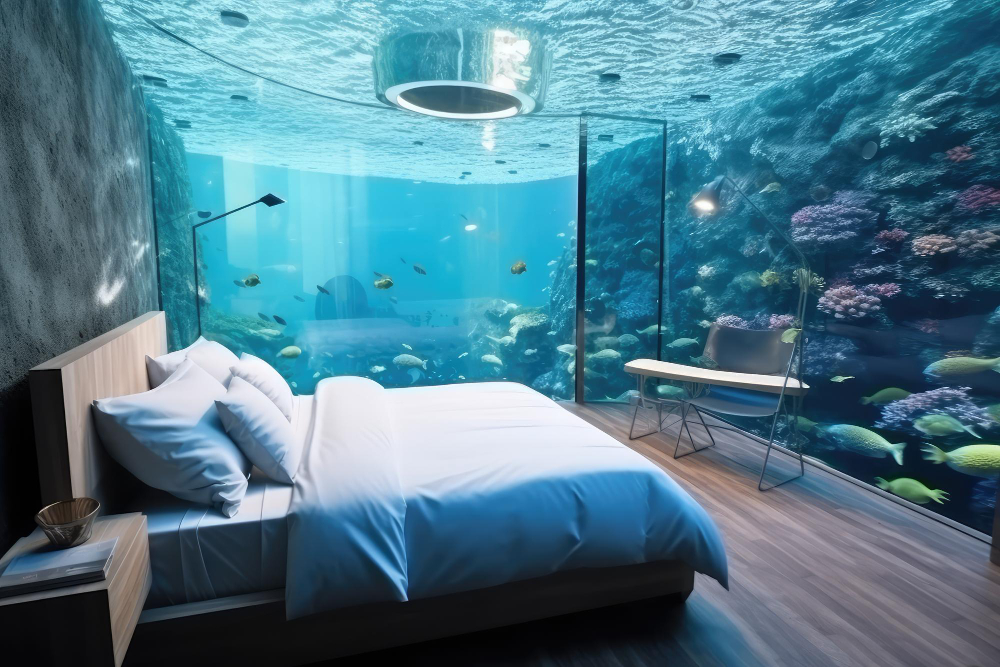
However, the industry is evolving, and some specialized cruise lines are pushing the envelope by offering underwater lounges like the Blue Eye Lounge where passengers can at least experience the underwater world without donning a scuba suit. While not a room to sleep in, these lounges do offer an enchanting glimpse of what lies beneath, filling the gap between fantasy and reality.
A Glimpse Below Deck: What Really Resides Underwater
Now that we’ve cleared the air—or rather, the water—about the existence of underwater cruise ship rooms, you might be wondering what actually exists below deck. The underbelly of a cruise ship is a hive of activity and essential services , all submerged beneath the ocean’s surface.
Understanding the elements below the waterline gives you a newfound appreciation for the intricate details that go into making your cruise experience smooth and enjoyable. So let’s set sail into the nitty-gritty of what resides underwater on these impressive maritime marvels.
What Proportion of a Cruise Ship Is Submerged in Water?
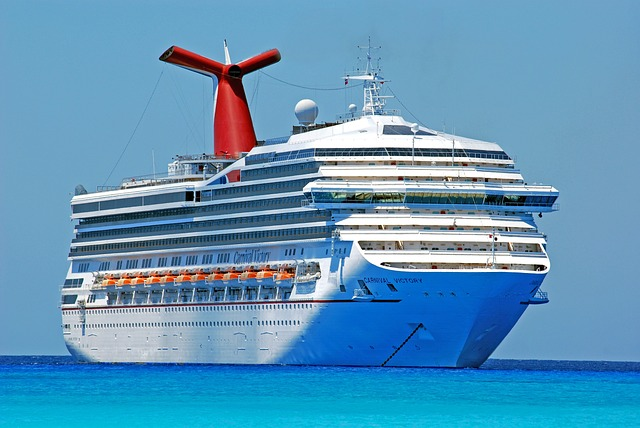
If you’re wondering how much of a cruise ship is actually underwater , it’s more than you might think. Generally, about 40% of the ship depending on the height of the ship (the larger, the lesser), is submerged below the water line , a vital area of a cruise vessel that supports the operations and well-being of everyone on board.
Cruise Rooms Below the Waterline
When the topic of underwater cruise ship rooms pops up, it’s easy to let your imagination run wild. However, what actually lies below the waterline is much more pragmatic than picturesque. The areas underneath are built for functionality and practicality, designed to keep the ship running smoothly. Here’s a closer look at what you’ll find:

Engine Rooms
The engine rooms serve as the beating heart of any cruise ship. This area is crucial for the ship’s overall operations , powering everything from the vessel’s propulsion systems to the electricity keeping the lights on and air conditioning running. Ensuring this space is functioning correctly is vital for the safety and enjoyment of both passengers and crew members alike.
Crew Cabins
Speaking of crew members , their accommodations, known as crew cabins, are usually situated below deck. Here, the various crew bar staff can rest and recharge after working tirelessly to provide guests with an unforgettable experience. These rooms are not designed for luxury but rather for utility, allowing the crew quick access to essential ship areas .
Storage Rooms
Next up are the storage rooms, the unsung heroes of the cruise ship. These spaces are extremely necessary for storing a range of products , including food, drinks, cleaning supplies, and replacement components. It’s these behind-the-scenes areas that ensure the ship stays well-stocked for the entirety of the journey.
Utility Rooms
Utility rooms class ships are a different beast altogether. These spaces house the technology and systems needed for water treatment, waste management , and other functionalities that help the ship stay environmentally responsible. By treating waste and purifying water, these rooms play a crucial role in minimizing the vessel’s impact on the marine environment.
Lower Decks
Last but not least, the lower decks are a combination of several of these elements. Often, you’ll find that these decks house not just engine rooms and other utility rooms and spaces but also communal areas for the crew, like crew bars , adding a little leisure to the mix of functionality.
So while the idea of underwater rooms for passengers may sound intriguing, the real story below deck is one of practicality and essential functions that keep the cruise ship operating seamlessly.
While you might not find the luxury of an underwater cruise ship room down here, you’ll find the backbone of what makes your above-water experience so seamless and enjoyable. As the industry innovates, who knows what could be next? Perhaps the vision of sleeping with fishes—figuratively, of course—might one day become a reality.
The Intricacies of Ship Design
While the notion of underwater cruise ship rooms may seem tantalizing, their absence in mainstream cruise line offerings is rooted in critical design intricacies that prioritize safety and structural integrity. Placing passenger rooms below the waterline could severely impact the ship’s overall balance and buoyancy, leading to navigation difficulties and safety risks.
Moreover, in the event of an emergency like a hull breach , underwater rooms could complicate rescue and evacuation efforts. Creating a stable, pressurized environment for such rooms would also pose additional engineering challenges that go far beyond conventional shipbuilding. For these reasons, cruise lines tend to focus on enhancing the onboard experience above the water, while reserving the area below for essential operational components.
Unique Exceptions: The Blue Eye Lounge
While traditional underwater cabins may still be the stuff of dreams, there’s one notable exception that brings us a step closer to the underwater fantasy: the Blue Eye Lounge . This pioneering venture in maritime luxury offers passengers a rare glimpse into the underwater world without requiring them to leave the ship.

What sets the Blue Eye Lounge apart isn’t just its submerged locale; it’s the multisensory experience it offers. Imagine sitting in a state-of-the-art lounge with underwater windows that provide live images from three underwater cameras , strategically placed to capture the most awe-inspiring marine sights.
The Blue Eye experience goes beyond mere visual spectacle. It employs a marine surround sound system that pipes in the very sounds of the sea around you. Through hydrophones and specialized underwater microphones , the lounge captures the acoustic environment of the deep sea, allowing passengers to hear marine life such as dolphins and whales in their natural habitat.
From the visual brilliance of marine life from the underwater window to the auditory magic of the ocean’s depths, the Blue Eye Lounge offers an immersive underwater experience unlike any other, bridging the gap between our wildest imaginations and the compelling reality beneath the waves.
Underwater Options in River Cruises
When it comes to the allure of underwater accommodations, river cruises present a different set of opportunities and limitations compared to ocean cruises. While traditional ocean cruises generally shy away from underwater passenger spaces for many rooms the reasons we’ve discussed, river cruises offer something akin to the experience, albeit with a twist.
River Cruise Cabin Types
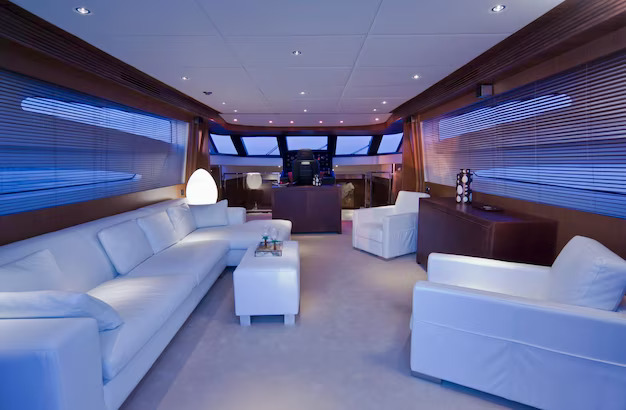
In river cruises, you’ll often find ‘river view’ rooms onboard accommodations that technically sit below the waterline but feature windows strategically positioned just above it. Take Viva Cruises , for instance, where cabins below the water level are not uncommon. While standing, the windows in these cabins would be around head height, giving passengers a unique viewpoint just above the water’s surface.
However, it’s essential to set your expectations accordingly. These rooms offer views of the river’s surface but do not immerse you in an underwater world teeming with marine life. Because they don’t offer the full underwater spectacle, these rooms are often some of the most budget-friendly options available on a river cruise.
So, if you’re looking to dip your toes into the world of semi-submerged accommodations without breaking the bank, a river cruise might just offer the experience you’re after—even if it’s not quite the same as sleeping with the fishes.
Why Don’t More Cruise Ships Offer Underwater Views?
The allure of underwater cruise ship rooms is undeniable, but why isn’t this a standard offering across cruise lines? Several key factors contribute to the absence of these underwater wonders on most ships.
Technological and Safety Barriers
- Construction Costs : One of the primary hurdles is the enormous expense involved in developing underwater cabins. Beyond the regular construction of cruise ship rooms, underwater options would require specialized materials and technology to maintain structural integrity and safety.
- Safety Concerns : As discussed in earlier sections, situating rooms below the sea level or the water line poses significant safety risks. In the event of a hull breach, rooms located underwater would be extremely dangerous and complicate evacuation procedures. This is a significant concern for cruise lines and their crew members who are responsible for the safety of all passengers.
- Quality of the Underwater View : While the idea of being submerged might sound fascinating, the actual underwater view can often be less than spectacular, depending on the region, water clarity, and marine environment. Unlike the Blue Eye Lounge, which has the luxury of underwater cameras and hydrophones, an underwater room could offer little more than a murky view for most of the journey.
- Maintenance Issues : An often-overlooked concern is the maintenance required for these rooms. Whether it’s ensuring the structural integrity of underwater windows or the upkeep of the underwater lounge, the ongoing costs and efforts are substantial.
In summary, while underwater viewing options like the Blue Eye Lounge or certain river cruise rooms do exist, they are exceptions rather than the rule. The practical challenges and costs associated with underwater cabins remain high, explaining why they are not more commonly featured across cruise lines.
While the allure of underwater cruise ship rooms might captivate our imaginations, the reality is far more functional yet equally fascinating. From the engine rooms that power the vessel to the crew cabins where the staff rest, the underwater portions of cruise ships are built for practicality, not luxury. But don’t be disheartened—options like the Blue Eye Lounge offer unique glimpses into the underwater cruise lounge world , serving as exciting alternatives.
Understanding the ship’s design can greatly enrich your cruise experience, providing insights into the marvels of engineering and marine life that make your voyage possible. In essence, what lies below the deck may not be what you envisioned, but it’s certainly worth discovering.
Are there any rooms underwater on a cruise ship?
While the idea of underwater cruise ship rooms is captivating, they generally don’t exist. What you’ll find underwater are essential areas like engine rooms and crew cabins. Some ships offer specialized lounges like the Blue Eye Lounge for a quasi-underwater experience, but true underwater rooms are not common.
Are all rooms on a cruise ship above water?
Most passenger rooms or cabins on cruise ships are located above the waterline. Despite occasional news headlines, the occurrence of cruise ships sinking is exceedingly rare, thanks to rigorous safety measures and navigation protocols.
The areas one cruise line has below the waterline are typically reserved for practical operations like engine rooms, storage spaces, and crew cabins. Some river cruises offer “river view” rooms that are below but near the waterline.
How many floors are below water on a cruise ship?
Depending on the cruise ship’s architecture, there may be a different number of underwater floors. Generally, about 25-30% of a cruise ship is below the waterline. These lower decks house crucial elements like the engine room, utility rooms, and storage spaces that help keep the ship running smoothly.
Is deck 3 underwater?
The location of Deck 3 depends on the ship’s design, but it’s usually above or around the waterline. On most cruise ships, the first few decks are reserved for operational needs, and passenger decks start just above the waterline. Always check the ship’s specific layout to be sure.
Digital Marketer
I’m Bobby Pham, but you can call me “Bobby on Cruise.” I’ve been cruising the high seas and exploring the world for years, and I’m thrilled to share my passion and expertise with you. When not cruising, I spend my time on growing my marketing agency.
About FunkyCruise
Cruise Tips For Families & Single Cruisers
Things to Know Before You Cruise
Underwater Cruise Ship Rooms: Fact Or Fiction?
As a child, I used to imagine a world beneath the waves, where mermaids swam freely and colorful fish darted in and out of coral reefs. The idea of staying in a room with a window that looked out into the depths of the ocean seemed like a fantasy.
However, as an adult, I discovered that some river cruise ships offered cabins with windows above the waterline, but it wasn’t until the Ponant Explore class ships were introduced that I realized underwater rooms were a real possibility.
While the Blue Eye lounge on these ships offers a communal underwater experience, I couldn’t help but wonder why underwater rooms for passengers on larger cruise ships weren’t more common.
As I delved deeper into the topic, I discovered that the challenges of incorporating underwater rooms for passengers on larger cruise ships were much more complex than I had imagined.
In this article, I will explore the reality of underwater cruise ship rooms, their limitations, and why they may not be as common as some may think.
- Majority of cruise ships do not have underwater cabins for guests, and lower decks are generally not used for passenger cabins.
- Modern cruise ships have essential parts like engine room, water treatment, air conditioning, fuel bunkers, water storage tanks, and plumbing below waterline, making it difficult to incorporate underwater windows.
- River cruise ships have cabins below waterline with windows above surface, and some have an aquarium class or underwater lounge for viewing.
- Glass windows would be a weak spot and could be vulnerable in case of an accident, making the incorporation of underwater viewing lounges challenging on larger cruise ships.
Existence of Underwater Cabins
I’ve learned that while some river cruise ships have cabins below the waterline with windows above the surface, ocean-going cruise ships generally do not have underwater cabins for guests. This is due to the majority of space below the waterline being used for storage, utility rooms, and crew quarters. The feasibility of having underwater cabins is also a concern, as the pressure of water and maintenance required would make having underwater windows difficult.
Additionally, glass windows would be a weak spot and could be vulnerable in case of an accident. Despite these challenges, there are some potential advantages to having underwater cabins. They could provide a unique and immersive experience for guests who want to be completely surrounded by the ocean and its wildlife.
However, incorporating underwater cabins on larger cruise ships would be challenging, as they are well-balanced and perfectly designed for cruising from port to port. Overall, while underwater cabins may not be a common feature on most cruise ships, there are still options for guests who want to experience the ocean from below, such as the Blue Eye lounge on Ponant Explore class ships or river cruise cabins with windows above the surface.
Deck Layout and Usage
The lower decks of most cruise ships are typically reserved for crew quarters, storage rooms, and utility spaces, rather than passenger cabins. This is done to optimize the layout of the ship and ensure that passengers have easy access to the amenities and areas they desire.
While it may be tempting to place passenger cabins on the lower decks, doing so would limit the number of cabins with ocean views and balconies, which are often preferred by passengers. Passenger preferences play a significant role in the layout of cruise ships, as the ultimate goal is to provide an enjoyable and comfortable experience for guests.
Therefore, cabins with balconies and ocean views are typically placed on the higher decks, while interior cabins are located on lower decks. This allows passengers to take full advantage of the scenic views and natural beauty of the ocean, while also providing an affordable option for those who prefer to spend less on their accommodations.
Ultimately, the layout of the ship is carefully planned to balance the needs and desires of passengers with the practical considerations of ship design.
Underwater Decks and Areas
Interestingly enough, the majority of modern cruise ships have at least one or two decks located below the waterline, which are typically used for essential ship functions and are inaccessible to passengers. These underwater decks contain crucial components that make the cruise a success, such as the engine room, water treatment systems, air conditioning units, fuel bunkers, water storage tanks, and plumbing. However, the pressure of the water and maintenance difficulties make it challenging to have any areas accessible to passengers below the waterline.
To emphasize the pressure challenges and maintenance difficulties, consider the following table:
While the idea of having underwater cabins or lounges may seem appealing, the reality is that the logistics and safety concerns make it impractical for modern cruise ships. Instead, passengers can enjoy the beauty of the sea from their cabins with balconies or from communal areas with large windows and panoramic views.
Limitations of Underwater Windows
Having windows below waterline on a cruise ship may seem like a great idea for those seeking a unique underwater experience. However, it’s important to understand the limitations and challenges that come with incorporating such windows.
The pressure of water at great depths can pose significant challenges for maintaining the structural integrity of the window, as well as for the safety of passengers. Additionally, maintenance difficulties can arise due to the constant exposure to saltwater and the need to keep the window clean and free of debris.
Furthermore, the glass used for such windows can never be as strong as steel, making it a weak spot in the hull of the ship. In the unfortunate event of an accident, the window could be vulnerable and pose a significant threat to the safety of passengers.
Therefore, while underwater viewing lounges may sound appealing, it is essential to consider the pressure challenges and maintenance difficulties that come with incorporating such features on a cruise ship.
River Cruise Options
I’ve learned that river cruises offer different options for those seeking a unique view, including cabins located below the waterline with windows above the surface. These rooms are generally the least expensive on the ship and are sometimes referred to as ‘aquarium class’ due to their view of the water.
However, river cruise ships generally have fewer categories of cabins than their ocean-going counterparts, with cabins often being categorized as either window only or ‘river view’ rooms. Despite the limited options, river cruise amenities are still top-notch and offer a comfortable stay for passengers.
Cabin pricing varies depending on the size and location of the room, but generally, prices for river cruises are more affordable than ocean cruises. For those seeking a unique experience, the aquarium class cabins on river cruises offer an underwater view without the need for complex and costly engineering solutions.
Blue Eye Lounge
Moving on from river cruise options, let’s explore the world’s first underwater communal lounge – the Blue Eye Lounge on Ponant Explore class ships.
This unique lounge is designed by French architect and oceanographer Jacques Rougerie and provides a truly immersive experience for guests. The lounge features huge windows that allow guests to view the underwater world, and also has underwater cameras and microphones outside that pipe in the sounds of the sea, creating a multi-sensory experience that is truly unforgettable.
If you’re interested in experiencing the Blue Eye Lounge for yourself, here are three things you should know. Firstly, the lounge is only available on Ponant Explore class ships, so you’ll need to book a cruise on one of these ships if you want to experience it. Secondly, the lounge is designed to be a communal space, so you’ll be sharing the experience with other guests. Finally, the lounge is located on the lower deck of the ship, so it’s close to the waterline and provides a truly unique perspective on the underwater world.
Challenges for Larger Ships
As a cruise enthusiast, it’s fascinating to consider the challenges that larger ships face when it comes to incorporating unique features like underwater viewing lounges.
While smaller river cruise ships have successfully implemented cabins below waterline with windows above the surface, larger ocean cruise ships pose design limitations and safety concerns.
The majority of space below waterline on ocean cruise ships is already used for storage, utility rooms, and crew quarters. Incorporating an underwater viewing lounge would require a significant redesign of the ship’s infrastructure.
Additionally, glass windows would be a weak spot in the hull, making the ship more vulnerable in case of an accident. As much as we would love to experience the ocean’s depths from the comfort of our cabins, it is important to prioritize safety and maintain the ship’s structural integrity.
Expert Insights
According to cruise industry expert Mike Schimdt, incorporating underwater viewing lounges on larger ocean cruise ships poses significant challenges due to design limitations and safety concerns. Cruise ship design is well-balanced and perfectly optimized for cruising from port to port. Any modifications that affect the balance or weight distribution of the ship could compromise its safety and seaworthiness.
Moreover, guest preferences for cabin location above the waterline also play a significant role in the decision not to include underwater cabins. Most passengers prefer cabins that are higher above the water with a balcony or at least a window for a view of the sea.
While some river cruise ships have cabins below the waterline, ocean cruise ships generally do not. Instead, the majority of the space below the waterline is used for storage, utility rooms, and crew quarters.
Are there any cruise ships with fully underwater cabins for guests?
Currently, there are no cruise ships with fully underwater cabins for guests. However, future possibilities exist with advancements in technology and engineering. Environmental concerns and safety considerations must be taken into account before implementing such designs.
What is the typical layout of the lower decks on a cruise ship?
Did you know that the majority of lower decks on cruise ships are used for crew quarters, storage, and utility rooms? Design trends and technological advancements prioritize efficiency and safety over underwater windows for guests.
What types of areas are typically located on the underwater decks of a cruise ship?
Underwater areas on a cruise ship typically house essential engineering components such as the engine room, water treatment, and plumbing. Incorporating underwater amenities poses engineering challenges due to the pressure of water, making it difficult to have windows.
What are some of the limitations of having underwater windows on a cruise ship?
While underwater windows on cruise ships offer a unique perspective, challenges like maintenance, pressure, and vulnerability in case of accidents limit their feasibility. Innovations like multi-sensory lounges offer a safer alternative.
Are there any other options for experiencing underwater views on a cruise ship besides the Blue Eye lounge and river cruise cabins?
Alternative options for experiencing underwater views on a cruise ship besides Blue Eye lounge and river cruise cabins are limited due to feasibility concerns. However, some ships offer submarine excursions or glass-bottom boat tours for a glimpse of marine life.

Underwater Cruise Ship Rooms – What Are They?
Most people don’t consider what is beneath the waterline of a cruise ship. However, for some, it may be a curiosity. The lower two decks are usually reserved for crew members only and areas off-limits to guests. So, what exactly are these underwater cruise ship rooms for?
In This Article…
How far below the waterline do cruise ships rest.
While cruise ship bottoms may appear wide, they are fairly narrow compared to the rest of the ship. They are generally no more than 30 feet or 9.1 meters below sea level, which is only 10% of the ship’s overall height.
Cruise ships are massive structures and are extremely heavy. Yet, the ship’s buoyancy and design cause it to rest primarily above water.
Underwater Cruise Ship Rooms
Underwater cruise lounge.
In 2019, Ponant, a French expedition company, launched the first underwater lounge. Blue Eye , designed by architect Jacques Rougerie, is a multi-sensory, sleek space on four vessels in their fleet: Le Dumont-d’Urville, Le Bougainville, Le Champlain, and Le Lapérouse.
While on board, guests can go underneath the water line to the lounge, where two oversized glass portholes appear like whales’ eyes, allowing passengers to get a unique ocean view, spotting exotic fish and other marine life.
These lounges also have digital screens projecting live images filmed by three underwater cameras and accompanied by marine surround sound.
The sound is based on noises within a three-mile radius of the cruise ship. In addition, the couches in the lounge vibrate in unison with the sea, making you feel like a real part of the underwater world.
Crew Cabins
You’ll find accommodation for the crew on one of the crew decks. On some ships, they are under the water or below the water line.

Depending on the department, crew members share dorm-style rooms with access to common eating areas, bars, and gyms.
The orlop is on the lowest four decks under sea level. It is the lowest deck of a cruise ship and is the farthest toward the rear of a ship. This area usually stores cables and ropes and may have received its name from overlapping cables that generally fill the space.
The Brig or Jail
No cruise line likes to use the brig to contain guests, but there are situations when they find this necessary, specifically when someone has committed a serious offense or is in danger of harming themselves or others. Most of the time, passengers receive a reprimand or, in severe instances, may be forced to sign a contract to modify their behavior.

If the offense is more serious, they are placed under cabin arrest and have two guards posted outside the door to prevent them from leaving.
Brigs are steel rooms found at the bottom decks of a ship, typically by the security office. People don’t spend long in this area, as they are often turned over to authorities once the ship reaches port.
Cruise Ship Morgue
People often describe cruise ships as small, floating cities, so it makes sense that there are deaths aboard them. While it seems morbid and perhaps alarming, guests don’t need to be concerned. Most deaths occur from natural causes like strokes or heart attacks. While a rare occurrence, there must be onboard accommodations to handle this situation.

The morgue only contains a few refrigerated compartments. The number of these compartments varies depending on the ship’s passenger capacity. Guests will never encounter it as the morgue is on crew-only lower decks.
Additionally, if the area is not in use, it can double as cold storage for flowers and other things. They do not use the morgue to store food.
When chairs become damaged, varnishes wear off a table, or there are repairs to be made, cruise lines don’t replace the damaged item. Cruise ships often have a woodshop, with carpenters who spend the day replacing, fixing, and updating items found on the ship.
Read Also: How Much Do Cruise Ship Workers Make?
However, they don’t just fix furniture or wood items. They replace worn carpeting and broken tiles and refurbish areas of worn railings that harsh ocean elements have damaged. They also handle delicate items, like replacing chair fabrics and drapes.
Crew Bar and OB
Cruise ships have areas where guests can sit back and relax. The crew has the same luxury. The OB or officer’s bar provides private space for officers, spa, cruise, and entertainment staff, while the crew bar is for anyone working on the vessel.

Drinks are cheaper in crew bars, and there are activities and music for staff to unwind during their time off. It’s often a place to stock up on cabin supplies.
Where does the newsletter that arrives at your cabin in the evening come from? While you may think they are created in advance, this is not the case.
If it were, ports missed due to turbulent weather or other situations which alter the itinerary wouldn’t make the newsletter possible. It would provide inaccurate and confusing information.
Each ship contains an underwater room with a print shop where news updates, daily planners, notes, and flyers are made.
While it sounds like a fast-paced highway, the I-95 resides below public decks. It is the main artery running forward to the aft. It gives crew members access to various areas of the ship.

Over time, this busy area was dubbed the I-95 after the famous interstate running from the east coast of the U.S. and ending in Miami (which is, interestingly, the cruise ship capital).
Its appearance is what you might expect. It looks like an extended hallway containing various storage spaces and doors leading to multiple areas. It’s an efficient design continually bustling with fast-paced action from moving staff and crew members.
If you ever wondered what the underwater cruise ship rooms are for, now you know. Although things may differ from one cruise line to another, these decks are generally for maintenance purposes, areas designated for crew members , and spaces that need to be kept out of the way of guests, like the brig or morgue.
Related Posts
Leave a reply cancel reply.
Your email address will not be published. Required fields are marked *

BigFoto.com
Free photo and big images with world travel articles
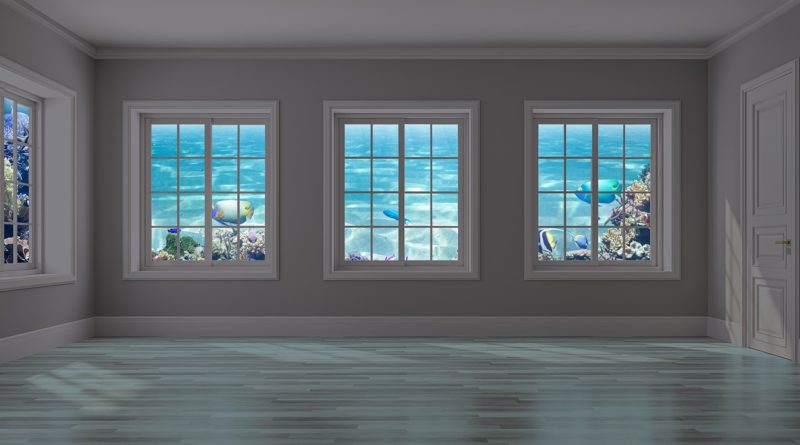
Underwater Cruise Ship Rooms – Discover the World Under the Sea
Have you ever wondered what it would be like to explore the world under the sea, With underwater cruise ship rooms , you can do just that! These rooms let you experience everything from coral reefs to schools of fish without having to get wet. Plus, they’re a great way to add a little excitement to your vacation. So if you’re looking for a unique and adventurous travel experience, check some of the best ship rooms out there. You won’t regret it!
What are underwater cruise ship rooms?
The majority of people do not consider what’s underneath the waters of cruise ships. But for certain, it might be an interesting thing to look at. The two lower decks are typically restricted to crew only and rooms aren’t accessible to visitors. What exactly are these submerged rooms on cruise ships for?
While the bottoms of cruise ships may appear to be wide, they’re actually quite narrow in comparison to the rest of the vessel. They generally are no greater than 30 feet or 9.1 meters below sea level, which is less than 10 percent of the overall height.
Rooms for Cruise Ships in the Underwater
You can now enjoy all the wonders of the sea without even getting wet! Underwater cruise ship rooms are typically located near the ship’s hull, providing guests with a stunning view of the marine life swimming by.
Imagine swimming in the ocean and then coming up to your room to find a bed, TV, and mini-bar waiting for you.
Many rooms also feature large windows that let in natural light, providing a bright and airy space to relax in. Cruise lines are now offering Underwater Cruise Ship Rooms that let you experience the beauty of the sea while lying in bed.
And don’t worry – these rooms are fully equipped with all the amenities you need, including air conditioning and private bathrooms.
So whether you’re an experienced scuba diver or simply looking to explore the world beneath the waves, underwater cruise ship rooms are sure to provide an unforgettable experience. Some of these rooms even have large windows that give you a perfect view of the marine life swimming around you.
Underwater Cruise Lounge
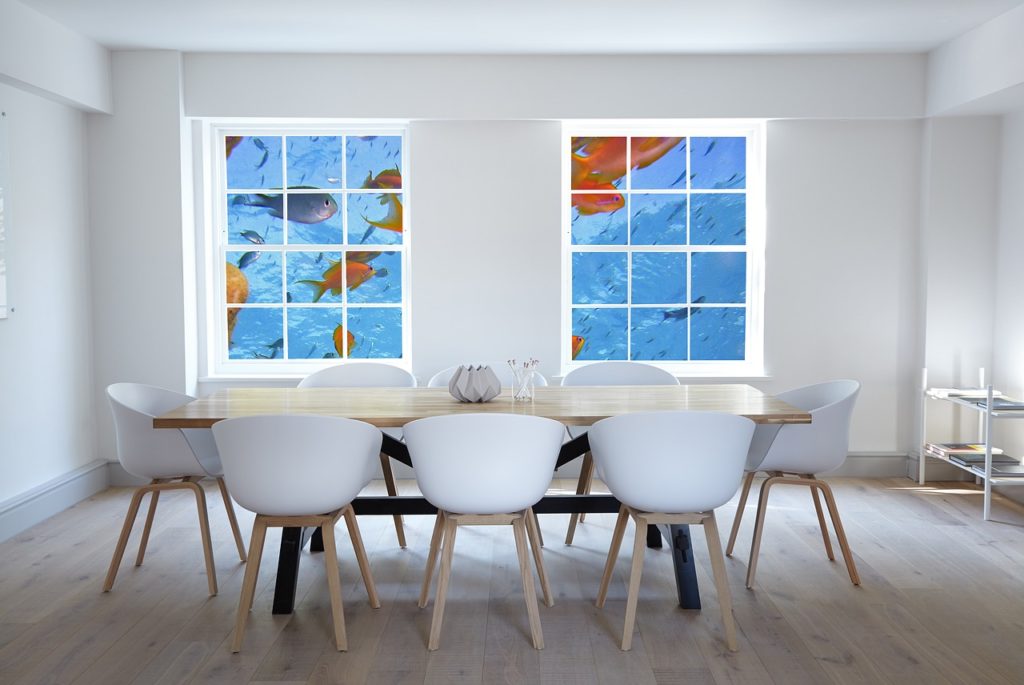
In the year 2019 Ponant the French expedition company, unveiled the world’s first underwater lounge. Blue Eye created by the architect Jacques Rougerie, is a spacious, multi-sensory space set that is on four vessels of the fleet of Le Dumont-d’Urville, Le Bougainville , Le Champlain, and Le Laperouse.
Onboard, passengers can walk under the waterline to the lounge. Two huge glass portholes resemble the eyes of whales, allowing passengers to enjoy a stunning ocean view while spotting the exotic species of marine life and different marine animals.
The lounges also have digital screens that show live images that were recorded using three cameras underwater and they are accompanied by underwater surround sound.
The sound originates from noises that occur within a radius of three miles from the ship. The couches of the lounge vibrate in sync with the sea and make you feel as if you are being a part of the ocean.
Crew Cabins
There is a place for the staff on the decks for the crew. On certain vessels, they’re either beneath the water or just below the waterline. The department that they are in will determine whether the crew members are in dorms and have the ability to access typical eating places, bars, and gyms.
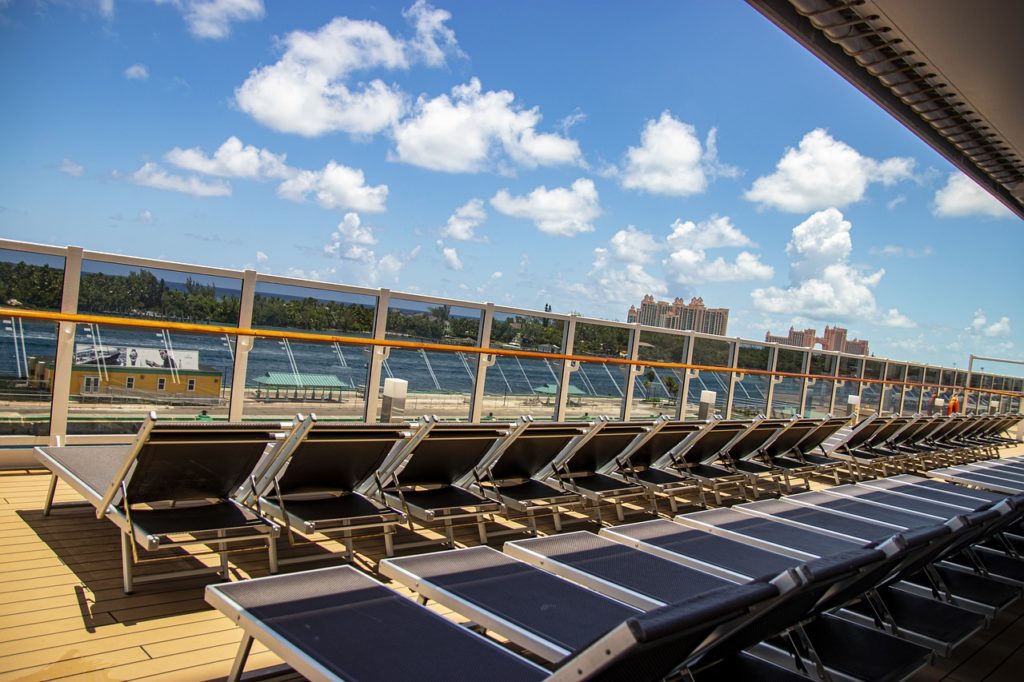
The orlop is one of the It is on the lower of the four floors beneath sea level. This is considered to be the bottom deck on a cruise vessel and is the most distant from the rear of the ship. The space is typically used for the storage of cables and ropes and might have earned its name because of the cables that typically cover the space.
Although it may sound like an incredibly fast-paced road, I-95 is located below decks for public use. It is the primary route that runs from the forward side towards the Aft. It provides crew members with access to the various areas of the vessel.
In the course of time, this bustling region was named I-95. I-95 in honor of the famed interstate which runs along the East Coast to the U.S. and ends in Miami (which is, in a way the capital of cruise ships).
Its look is similar to what you would think. It appears to be an extended hallway with storage spaces and doors that lead to various spaces. It’s a well-designed layout that is constantly busy with the fast-paced actions of employees and personnel.
Crew Bar and the OB
Cruise ships have lounges where guests can relax and take a break and relax. The crew can enjoy the same amenities. Its OB (or officer’s bar) offers exclusive space for officers’ spas, cruise, and entertainment personnel.
The bar for crew members is open to anyone employed at the ship. Drinks are less expensive in the crew bars, and there are activities and music to relax during their downtime. It’s a popular spot to buy things for your cabin.
If there were ports that were not able to be reached due to weather storms or other events that affect the itinerary won’t allow the newsletter to be published. This would give inaccurate and misleading information.
Every ship has an underwater space that has a print shop in which news announcements, daily planners, notes, and flyers are made.
Bottom Line
If you’re looking for a new and adventurous way to travel, consider an underwater cruise ship room. You’ll be able to see the world in a whole new light – quite literally. So if you’re interested in adding a little excitement to your next vacation, book some underwater cruise ship rooms today!
- ← Ghana Pictures and Travel Information
- Good Morning in Hawaiian – The Best Time to Visit Hawaii →
Leave a Reply Cancel reply
Your email address will not be published. Required fields are marked *
Save my name, email, and website in this browser for the next time I comment.

Bottom of a Cruise Ship (Every Part Explained)
This article may contain affiliate links .
The bottom of a cruise ship might not be the first thing that comes to mind when you think of a luxurious cruise journey, but it is undeniably one of the most vital components of maritime design and engineering.
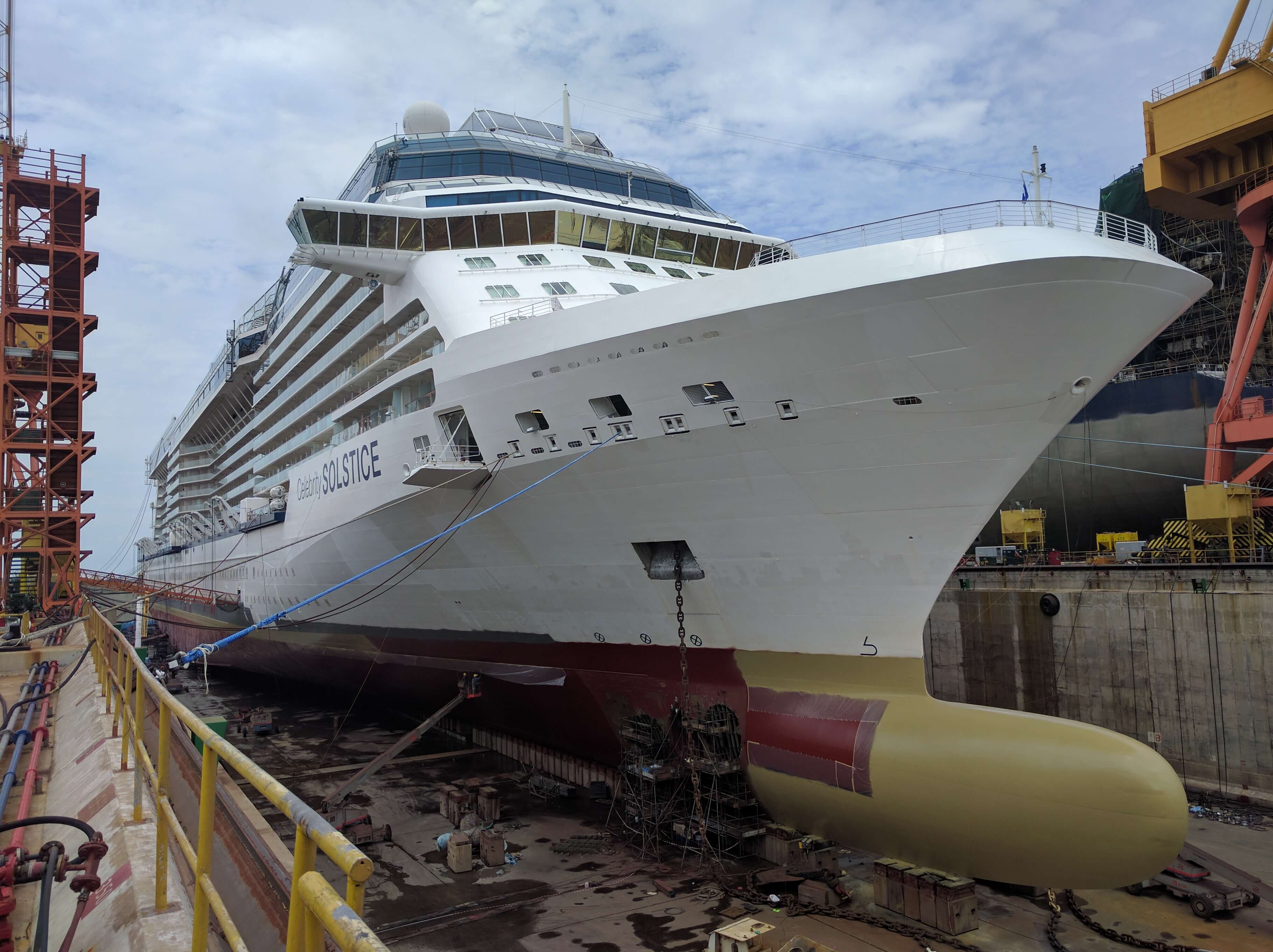
As you stand aboard a grand cruise ship, captivated by its opulent amenities and the vast seascape, it’s easy to forget the marvel that lies submerged beneath the waterline.
This crucial part of the ship, often overshadowed by its above-deck counterparts, plays a foundational role in ensuring performance, safety, and sustainability.
Delving into the intricacies of a cruise ship’s underside offers insights into the world of naval architecture, dispelling myths and revealing the innovations that guarantee our voyages are not only enjoyable but also safe.
Let’s embark on a deep dive into the unseen hero that keeps these magnificent vessels afloat.
What Is the Bottom of a Cruise Ship Called?
For those unfamiliar with naval terminology, deciphering the various parts of a ship can seem like navigating through a linguistic maze.
When it comes to cruise ships, or any seafaring vessel, the ‘bottom’ has its own special designation, deeply entrenched in shipbuilding traditions and maritime lore.
The bottom of a cruise ship is commonly referred to as the “hull.” The hull is the watertight body of the ship, extending from the main deck to the very base.
It is integral to buoyancy, stability, and the overall structural framework of the vessel.
Built to counteract water pressure, stave off corrosion, and facilitate smooth sailing, the hull’s design and materials are specifically tailored for maritime conditions.
Within the hull, there are distinct subdivisions:
Often regarded as the ship’s backbone, the keel runs centrally from the front to the back at the very bottom. It grants the ship its structural strength and is paramount for stability.
Situated at the lowest part of the ship’s hull, the bilge is where water typically accumulates due to various factors like condensation, potential leaks, or specific onboard activities.
Ships are equipped with bilge pumps designed to expel this water, ensuring the vessel remains dry and secure.
A protrusion at the front bottom of many modern ships, including cruise ships. This unique design helps reduce resistance as the ship moves through water, increasing fuel efficiency and speed.
It also aids in reducing the bow waves, making voyages smoother for passengers.
Over the centuries, the design and nuances of the hull have continually evolved, reflecting advancements in technology and the distinct requirements of diverse ship categories.
In the context of cruise ships, the hull stands out as especially vital, safeguarding the journey of thousands of passengers and crew members as they traverse the vast oceans.
To sum up, while the phrase ‘bottom of a ship’ may sound elementary, it unfolds a universe of design, engineering, and maritime heritage in the embodiment of the hull. It showcases mankind’s remarkable capacity to innovate and master the challenges of the deep blue.
What Does the Bottom of Cruise Ships Look Like?
The exterior of cruise ships, with their towering decks and panoramic windows, often captures the imagination of spectators. Yet, the underwater portion, though unseen by most passengers, is an engineering marvel in its own right.
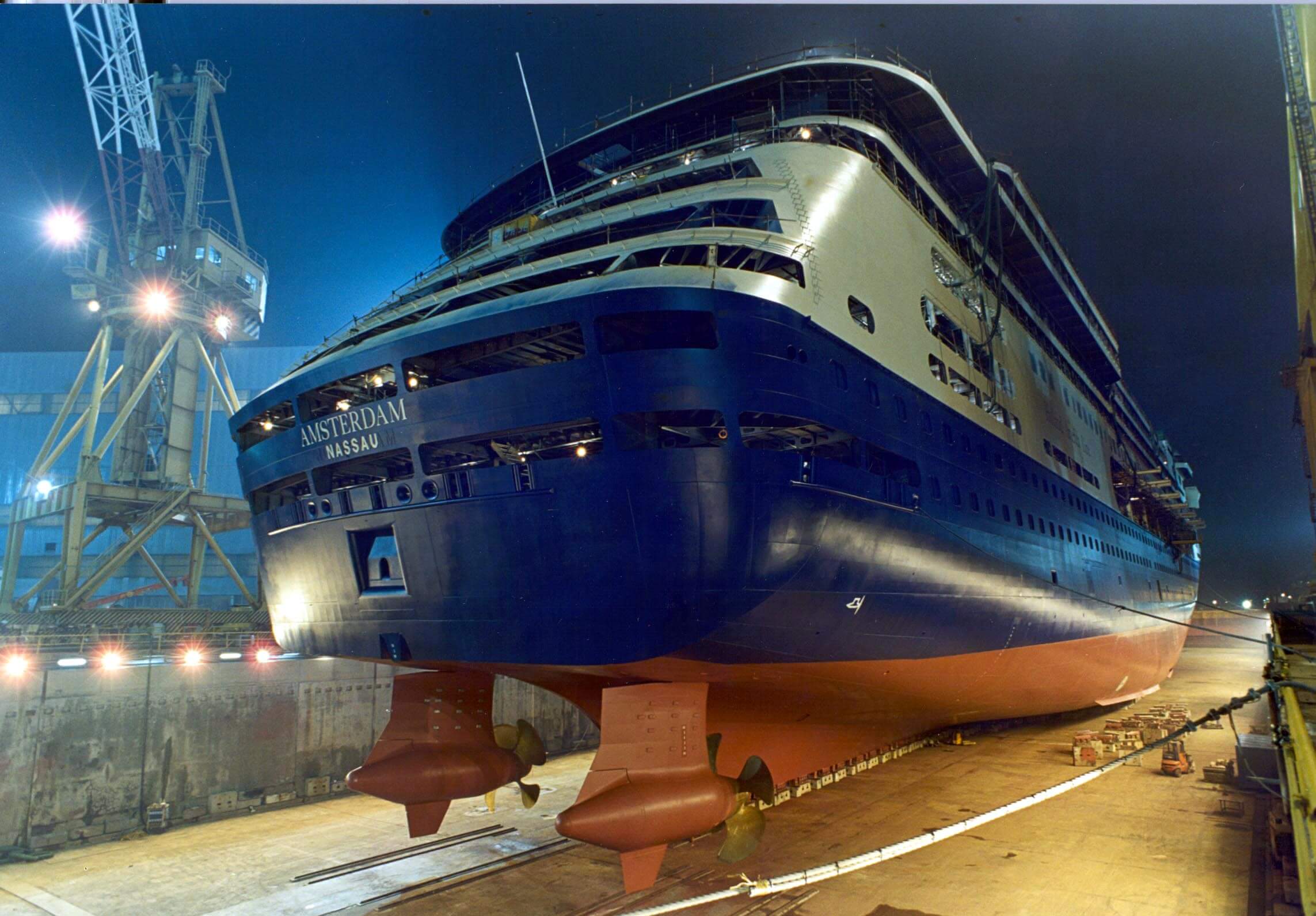
Image credit: Bolici
So, what does it look like underneath a cruise ship?
Shape and Structure
The underbelly of a cruise ship is streamlined and sleek, designed for efficient movement through water. While the top of the ship might have multiple decks and superstructures, the bottom narrows down to a smooth, somewhat flat surface, tapering towards the stern and bow.
Material and Color
Typically made of robust steel, the hull has a thickness that can handle the immense pressures of the sea. It is often coated with a specialized paint known as anti-fouling paint.
This unique paint, usually dark in color (like blue or black), prevents marine organisms like barnacles and algae from attaching to the ship, ensuring smoother movement and better fuel efficiency.
Bulbous Bow
As previously mentioned, many modern cruise ships have a bulbous protrusion at the front bottom. This rounded extension is easily identifiable and plays a pivotal role in enhancing the ship’s hydrodynamics.
Rudders and Propellers
Towards the stern of the ship, one can find the ship’s rudders and propellers. These critical components steer the ship and provide thrust, respectively. They are massive in size, with some cruise ship propellers spanning several meters in diameter.
Stabilizers
Extending from the sides of the hull are stabilizer fins, similar in appearance to airplane wings but submerged. They help counteract the ship’s roll, ensuring a more stable and comfortable journey for passengers.
Sensors and Equipment
The hull might house various sensors, like sonar, which assist in navigation and detecting underwater obstacles. These devices are often recessed or streamlined to maintain the smooth contour of the ship’s underside.
Keel and Bilge
Right at the center and deepest part of the bottom, the keel runs longitudinally, acting as the ship’s backbone. The bilge, a slightly curved section, is where water collects and is expelled by bilge pumps.
In essence, the bottom of a cruise ship is a fusion of form and function, showcasing advanced engineering tailored for the unique demands of maritime travel.
It’s an intricate balance of design elements, all working in harmony to navigate the complexities of the ocean and provide passengers with unforgettable voyages.
How Far Underwater Is The Bottom Of A Cruise Ship?
One of the marvels of maritime engineering is the ability to float structures weighing several tons effortlessly on water. Cruise ships, often referred to as “floating cities” due to their vastness, are a prime example.
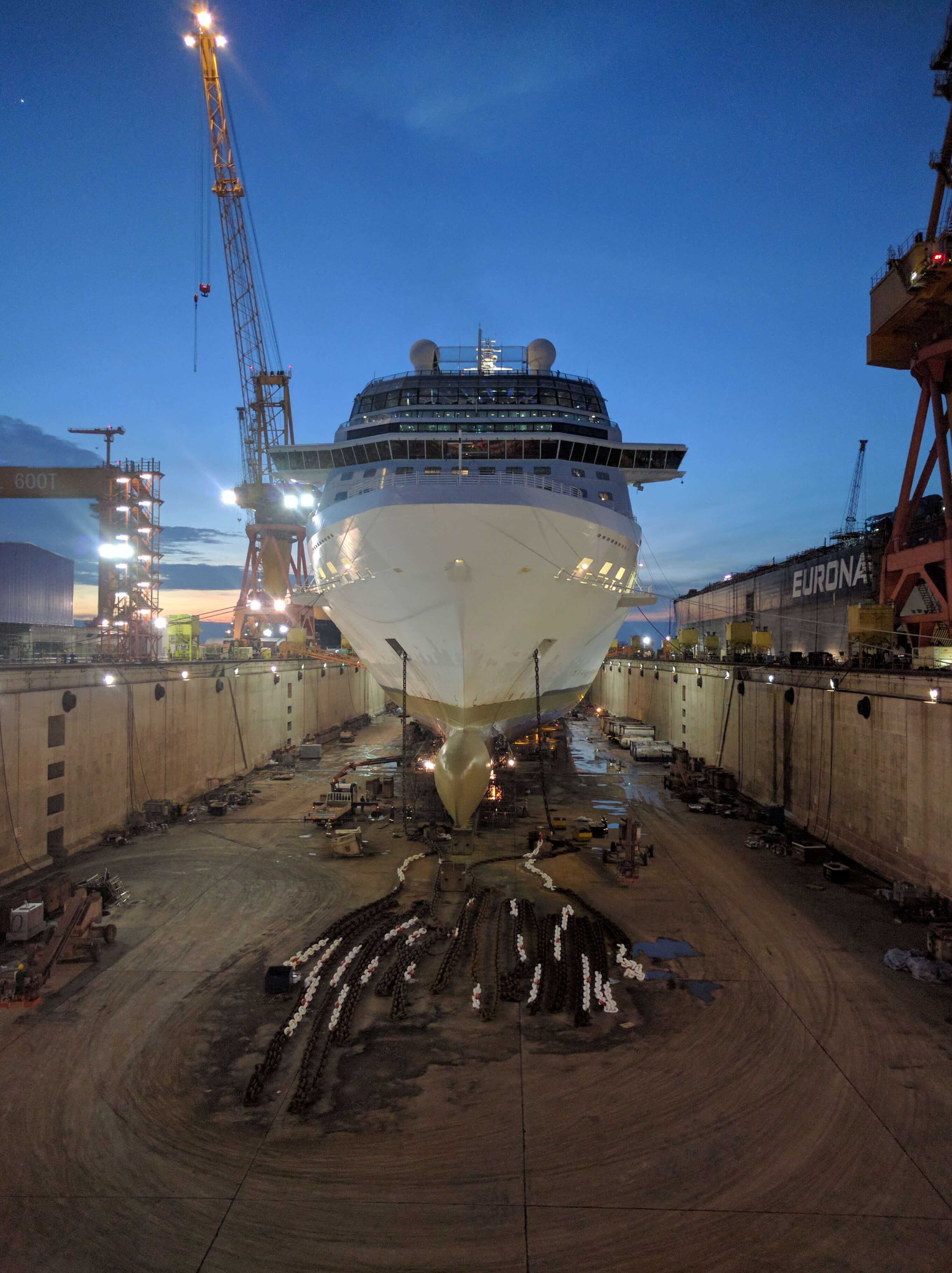
But just how deep does the bottom of such a vessel sit underwater? This submerged portion of the ship is technically termed its “draft.” Here’s an exploration of that aspect
Understanding Draft
The draft of a ship refers to the vertical distance between the waterline and the lowest point of the vessel’s keel. In simple terms, it indicates how much of the ship is underwater
Factors Influencing the Draft
Ship’s load.
As a ship takes on more weight, be it cargo, fuel, provisions, or passengers, it will sit deeper in the water, increasing its draft.
Water Density
Saltwater is denser than freshwater. So, a ship will sit slightly higher (have a shallower draft) in the ocean compared to a freshwater lake or river, all else being equal.
Temperature and Salinity
Variations in water temperature and salinity can influence its density, subsequently affecting the ship’s draft.
Typical Draft of a Cruise Ship
Cruise ships vary in size, from smaller luxury vessels to mega-ships. The draft can range considerably based on this:
Smaller Cruise Ships
They might have a draft ranging from 20 to 25 feet (6 to 7.6 meters).
Medium to Large Cruise Ships
These can have drafts anywhere from 25 to 30 feet (7.6 to 9.1 meters).
Mega Cruise Ships
The largest of cruise ships can have drafts exceeding 30 feet (9.1 meters), with some even approaching 40 feet (12.2 meters).
Operational Considerations
Navigating shallow waters.
Cruise ships sometimes need to access ports located in shallower waters. In such cases, having a shallower draft is beneficial. Some ships are specially designed with this in mind to expand their potential itineraries.
Ballast Systems
Modern cruise ships are equipped with ballast systems that can adjust the amount of water they carry, thereby influencing their draft to some degree, helping in optimizing stability and navigating varying water depths.
Safety Margins
While understanding the draft is essential for navigation, ships also maintain safety margins. This ensures that they don’t accidentally scrape the seabed when navigating areas close to their maximum draft.
In essence, the portion of a cruise ship that’s submerged underwater is influenced by a variety of factors, both inherent to the ship’s design and external conditions.
While passengers aboard enjoy the panoramic views and luxurious amenities, the depth at which the ship’s bottom sits plays a pivotal role in its safe and efficient navigation.
Are Cruise Ship Bottoms Flat?
The design and structure of cruise ships are fascinating topics of exploration, and a common question that arises is regarding the shape of their bottoms.
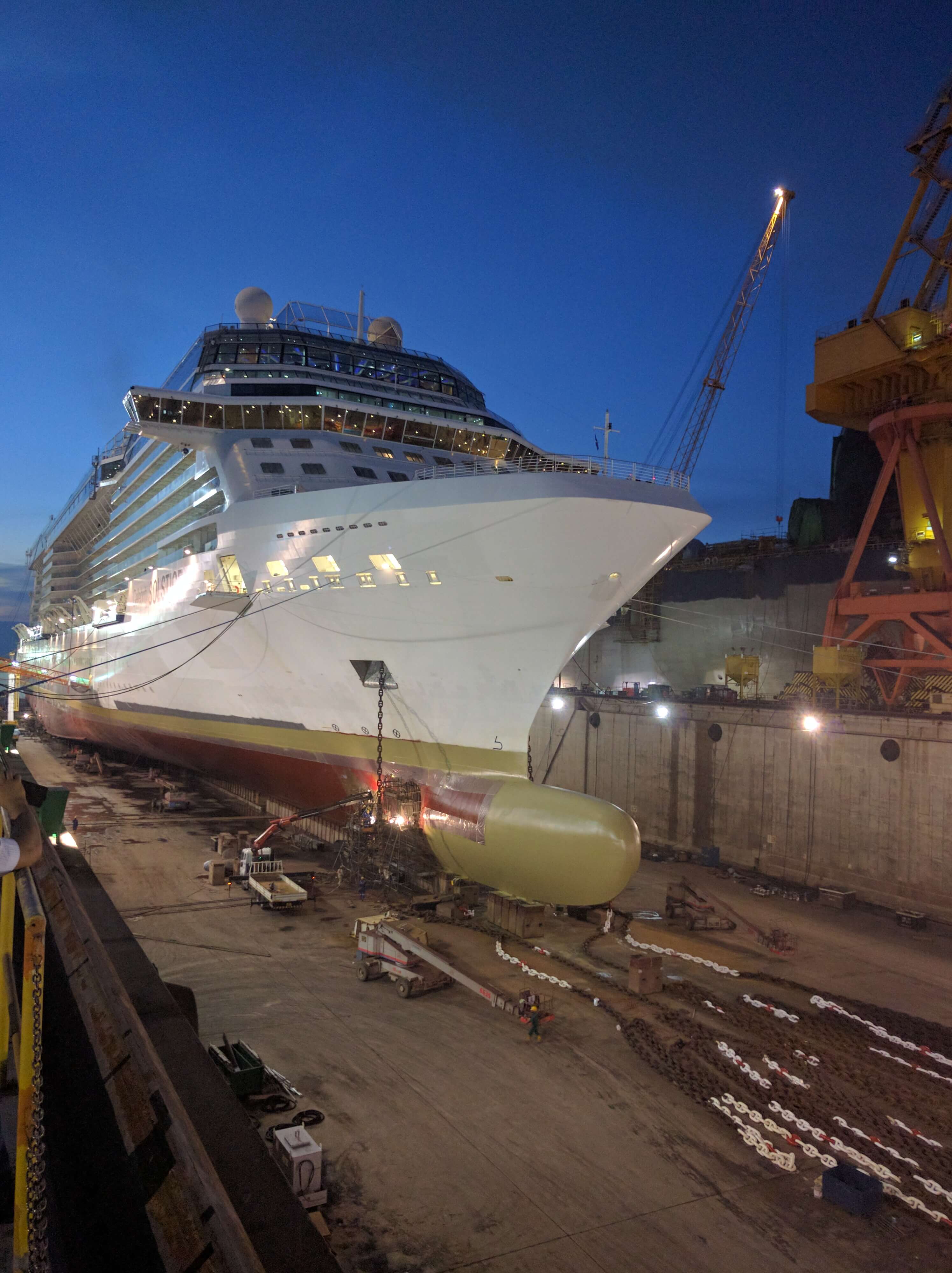
Are they flat, as one might presume when considering the massive size and weight of these vessels?
Let’s have a look:
General Design
At first glance, one might assume that the large, broad base of a cruise ship would be flat to maximize stability. However, the reality is more intricate.
Cruise ship bottoms are not entirely flat; they have a somewhat curved design, especially noticeable from the bow to the stern.
Why Not Completely Flat?
Several reasons dictate the non-flat design
Hydrodynamics
A completely flat bottom could create more resistance as the ship moves through the water. A slightly curved design allows for smoother passage, reducing drag and improving fuel efficiency.
Buoyancy and Stability
The curved design distributes the ship’s weight more evenly, allowing it to float and move with more balance, especially in rough seas.
Dealing with Depths
A slightly raised or curved design in certain parts of the bottom ensures the ship doesn’t run too deep, especially helpful when navigating shallower waters or ports.
Considerations in Modern Shipbuilding
As cruise ship designs evolve, so do the considerations for their hull shape. Environmental concerns, fuel efficiency, passenger comfort (minimizing motion sickness), and navigational needs all play roles in determining the precise curvature and features of a ship’s bottom.
Basically, while cruise ships might appear to have a vast, flat base given their immense size, their bottoms are not strictly flat.
They are designed with a subtle curvature and specific features that cater to the complex demands of maritime engineering, ensuring efficient, safe, and comfortable voyages for all on board.
Why is the Bottom of a Ship Painted Red?
The distinctive red color often seen painted on the bottom of ships, both historic and contemporary, is more than just an aesthetic choice.
This age-old tradition has a foundation in practicality, functionality, and maritime science. Here’s a closer look at why ships frequently don this fiery hue below the waterline:
Historical Use of Copper
In the age of wooden ships, sailors discovered that sheets of copper or copper-based paint on a ship’s hull would prevent marine organisms like barnacles and teredo worms from boring into the wood and damaging it. Copper, when in contact with seawater, releases ions that have anti-fouling properties.
The characteristic reddish-brown color of oxidized copper led to a distinct red hue on the ship’s bottom.
Anti-fouling Paint
Marine organisms attaching to the hull – known as fouling – significantly impact a ship’s performance and durability. It can increase drag, reduce speed, and lead to higher fuel consumption.
Modern anti-fouling paints, which are successors to the original copper sheathing method, often still contain cuprous compounds. While there are varying colors available today, the traditional red remains a popular choice due to its historic ties.
Visibility of Damage and Fouling
Red offers a stark contrast to the deep blues and greens of ocean waters. This contrast makes it easier for sailors and dock workers to spot damages, leaks, or excessive fouling on the ship’s hull.
Tradition and Aesthetics
Over time, the red bottom became a maritime tradition. Even with the evolution of marine paints and coatings, many ship owners and builders still prefer the classic red for its aesthetic appeal and nod to seafaring heritage.
Economical and Practical
Red pigments were historically more affordable and abundant, making them a cost-effective choice for shipbuilders and owners.
Variations in Hue
It’s worth noting that while red is common, it’s not universal. Different shades ranging from brownish-red to pink or even other colors like black and blue can sometimes be observed.
These choices can be influenced by the specific anti-fouling product used, company branding, or other functional considerations.
In summary, the red bottom of ships is a marriage of practicality and tradition. While it has its roots in the bygone era of wooden vessels and copper sheathing, the color persists today as a symbol of maritime legacy, aided by the practical benefits it continues to offer in the modern age.
How Do You Clean the Bottom of a Cruise Ship?
Ensuring the hull of a cruise ship is clean is not just an aesthetic concern; it’s crucial for the vessel’s efficiency, safety, and environmental footprint.
Over time, marine organisms, such as barnacles, algae, and mussels, can attach themselves to the ship’s bottom. This phenomenon, known as biofouling, can slow the ship down, increase fuel consumption, and even damage the hull.
So, how do cruise lines keep these gigantic vessels in pristine condition beneath the waterline?
Dry Docking
This is the most comprehensive method for cleaning and maintaining the hull. Every few years, cruise ships are scheduled for dry docking. During this process, the entire vessel is taken out of the water, allowing workers to access and clean the ship’s bottom thoroughly.
This is also an opportunity to inspect the hull for damages, repaint it with anti-fouling paint, and conduct any other necessary repairs or upgrades.
Underwater Cleaning Robots
With advancements in technology, some cruise lines employ automated underwater robots or remotely operated vehicles (ROVs) equipped with brushes and cameras.
These devices can scrub the hull’s surface while the ship is still in the water, removing accumulated organisms and grime.
For specific tasks, or when robots might not be feasible, trained divers are deployed. They manually clean and inspect the hull using specialized tools. This method is particularly useful for addressing localized issues or conducting minor repairs.

Anti-fouling Coatings
One preventive measure against biofouling is the application of anti-fouling paint. These coatings release biocides, substances that deter marine organisms from attaching to the hull.
The paint not only provides a smoother surface, reducing drag and enhancing fuel efficiency, but also minimizes the need for frequent cleanings.
Ultrasonic Systems
Some modern ships are equipped with ultrasonic anti-fouling systems. These use ultrasonic waves to prevent marine growth on the hull.
The vibrations create an environment that’s unfavorable for organisms, thereby preventing them from settling on the ship’s bottom
Eco-friendly Solutions
With growing environmental concerns, the maritime industry is continuously exploring eco-friendly solutions for hull cleaning. Techniques that don’t rely on harmful chemicals and that cause minimal disruption to marine ecosystems are being prioritized.
Maintaining the cleanliness of a cruise ship’s bottom is an ongoing task that combines manual efforts, technological solutions, and preventive measures.
The commitment to keeping these colossal vessels clean underscores the importance of efficiency, safety, and environmental responsibility in the cruise industry.
What is in the Bottom of a Cruise Ship?
While the vast decks and luxurious amenities are what usually capture the attention of cruise-goers, the bottom levels, often hidden from the guests’ view, play a pivotal role in ensuring the smooth operation of the entire vessel.
These areas, which make up the foundational layers of the ship, are both functional and crucial for safety. So, what exactly can one find in the bottom of a cruise ship?
Engine Rooms
Typically situated deep within the ship, the engine rooms house the primary machinery that powers the cruise ship. From massive diesel engines to electrical systems, this is where the ship’s heartbeat resides.
Large tanks containing the fuel needed to power the ship’s engines are usually located towards the bottom. Their placement helps in maintaining the ship’s balance and stability.
Ballast Tanks
Ballast tanks play a vital role in maintaining a ship’s stability. They can be filled or emptied of water to adjust the ship’s weight and balance. This is particularly useful when accommodating changes in fuel weight or cargo distribution.
As mentioned earlier, the bilge is the lowest point of the ship where water, from sources like condensation or minor leaks, collects. Bilge pumps are stationed here to expel this water and ensure the ship remains dry.
Stabilizers’ Machinery
While the actual stabilizers are external and protrude from the sides of the ship, the mechanisms and controls that operate them are located within the lower levels.
Waste Treatment Facilities
Modern cruise ships are equipped with advanced waste treatment systems that handle and process sewage, gray water, and other waste products. This ensures environmental regulations are met and minimizes pollution.
Storage Areas
The bottom levels often contain vast storage rooms. These are crucial for storing provisions, from food and drink to spare parts and other essential supplies needed for long voyages
Crew Quarters
While crew members reside throughout the ship, some crew quarters, especially for those working in the engine rooms or other lower-deck service areas, might be located towards the ship’s bottom.
Laundry Facilities
Given the number of guests and the volume of linens, towels, and uniforms, cruise ships require extensive laundry facilities. Some of these operations are located in the lower decks due to space requirements and logistical convenience.
Water Tight Compartments
For safety, the bottom of the ship contains several watertight compartments. In the event of a breach or flooding, these compartments can be sealed off to prevent water from spreading and compromising the ship’s buoyancy and stability.
In essence, the bottom of a cruise ship is a bustling hub of crucial operations and facilities, all working seamlessly behind the scenes.
These layers ensure that guests above can enjoy their journey with peace of mind, blissfully unaware of the intricate dance of engineering and logistics taking place below their feet.
Videos Underneath a Cruise Ship
Here’s an interesting video of a guy dropping a gopro underneath a cruise ship…
And here’s a video of a cruise ship in drydock:
To Sum It Up
The bottom of a cruise ship, often overshadowed by the vessel’s towering decks and luxurious amenities, holds a rich tapestry of engineering, history, and maritime tradition.
From the precise design of the hull to ensure hydrodynamic efficiency and stability, to the depths at which these massive ships sit in the water, and the distinctive red hue that has colored the undersides of vessels for centuries, each aspect serves a purpose rooted in functionality and heritage
. The red paint, in particular, is a vivid testament to the blending of past maritime practices with contemporary needs, symbolizing the enduring spirit of naval exploration and adventure.
As passengers sail to their next destination, they’re buoyed by a legacy of seafaring innovation and tradition that lies beneath them, ensuring every voyage is safe, efficient, and in harmony with the vast oceans that cradle these magnificent vessels.
More Reading...
- Norwegian Cruise Line vs. Celebrity Cruises Compared
- Celebrity Cruises vs Princess Cruises: Who Comes Out on Top?
- Best Travel Gifts
- Fishing on a Cruise Ship
- Best Travel Humidors
- Can I Bring A Fan On A Cruise Ship?
Dan Claydon
- Search Please fill out this field.
- Manage Your Subscription
- Give a Gift Subscription
- Sweepstakes
The First Underwater Cruise Ship Lounge Is the Newest Way to Enjoy the Ocean
It's better under the sea.
:max_bytes(150000):strip_icc():format(webp)/JacquelineGifford-8cf2b4b38a1340b9aabd21cb48810b2a.jpg)
Cruise companies have been obsessed with firsts, as of late: Last year, Royal Caribbean debuted the world’s largest ship, Harmony of the Seas , while Regent Seven Seas Cruises launched the $450-million Seven Seas Explorer , the most expensive ship ever built.
And now, the French expedition cruise company Ponant is getting in on the game by launching the first-ever underwater lounge at sea. Blue Eye, a sleek, multi-sensory space, will be unveiled on the brand’s four new Ponant Explorers: Le Bougainville , Le Dumont-d'Urville , Le Lapérouse and Le Champlain.
On board each ship, passengers will be able to head beneath the water line to the Blue Eye lounge. There are two large glass portholes designed like the eyes of a whale that let passengers peer out into the depths below, digital screens that project live images filmed by three underwater cameras, marine surround-sound based on sounds in within a three-mile radius of the ship, and sofas that vibrate in unison with the sea.
The four yachts, which will be rolled out in 2018 and 2019, should prove to be popular, as the desire for expedition cruising — a method of travel that highlights small, hard-to-reach ports, immersive wildlife excursions, and on-board experts and naturalists — only continues to grow.
Other companies set to unveil next-gen expedition vessels include Silversea, which will refit the Silver Cloud to focus on polar sailings; Norwegian-line Hurtigruten; and Scenic, with its ultra-luxury expedition yacht, the Scenic Eclipse.

- River Cruises
- Ocean Cruises
- Cruise Extras
- Travel Journal
- Already Booked
- Enquire Online
- Cruise Ships
- Cruise FAQs
Meet The Cruise Ship With An Underwater Lounge
03 Oct 2017
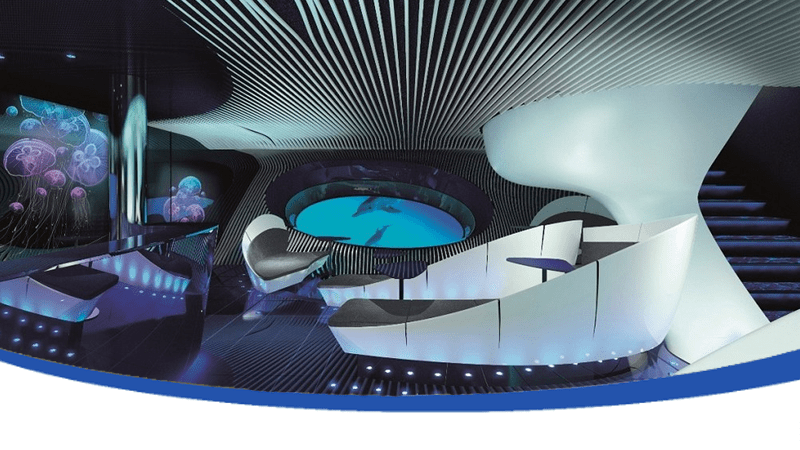
When you set sail on a cruise ship, the last thing you really want to see is something below the waterline, but one cruise line is planning to change that mindset.
PONANT’s pioneering Explorer class of ships, which consists of Le Lapérouse, Le Champlain, Le Bougainville and Le Dumont-d’Urville, will be the first ships to ever have an underwater lounge.
The Blue Eye lounge, located within the hull beneath the water line, will amaze travellers with breathtaking views of underwater sea life. The lounge has subtle graphical references that evoke cetaceans and jellyfish. All focus is drawn towards the two giant portholes, shaped like the eye of a whale. Relax in the lounge with a drink in hand as whales and sea creatures swim by the large eye-shaped window. Live footage from three strategically-placed cameras around the ship will also capture underwater action, such as dolphins playing in the bow waves. These will be projected onto digital screens throughout the lounge.
French architect Jacques Rougerie, who designed the innovative lounge and is deeply passionate about the sea, explained: “In my work, I have always had my heart set on making people aware of the role that the sea has played in the history of humanity. I designed this multi-sensory underwater lounge in order for it to become enshrined at the heart of the PONANT philosophy. I set out to discover this fragile and exciting ocean world, which covers 71% of the planet’s surface and remains a huge mystery for mankind. The destiny of the civilisations to come will be born from the ocean.”

Offering a subtle blend of refinement, intimacy and comfort, the new ships will boast just 92 cabins and suites, elegantly designed, spacious and with lounge areas that open onto the outside. An infinity pool overlooks the well-equipped marina at the back of the ship which will offer a variety of water sport activities.
PONANT, the luxury expedition cruise line, is the only cruise line to fly the French flag. Currently operating five yacht-like ships (Le Ponant, Le Soleal, Le Lyrial, Le Boreal, L’Austral), the first of the new Explorer class of ships, Le Lapérouse will join the fleet in June 2018, followed by Le Champlain in September 2018. Le Bougainville and Le Dumont-d’Urville will join in 2019.
Azamara Pursuit to be named in Southampton
Symphony of the Seas – The World’s Largest Cruise Ship – ON SALE NOW!
Hot Cruise Destination: Alaska
Customer Review
Mr Fellowes
Excellent cruise, luxurious ship and it was wonderful to have a full size bath in a large bathroom.
Cruise Line: Oceania Cruises
Destination: Baltic
Cruise Ship: Marina
Ocean World Travel
- Our Brochures
- Benefits of Booking Onboard
- Cruises from Southampton
- Privacy Policy
- Terms & Conditions
Get In Touch
- 0800 368 9050
132 Winchester Road
Chandlers Ford
- [email protected]
- Opening Hours
Book With Confidence

- Whitehaven Beach & Hill Inlet
- Great Barrier Reef Adventures
- Camira Sailing Adventures
- Island Escape Day Cruises
- Airlie Beach
- Groups & Events
- Resort Connections
- Turtle Club
- Newsletter sign-up
- Whitehaven Beach & Hill Inlet
- Great Barrier Reef
- Sailing Adventures
- Island Paradise
- Manage Booking
- Environmental Commitment
- Join the Travel Club
- Gift Voucher
Highlights & Inclusions
What to bring, before you go.
- Pricing & Departures
Optional Extras
About the project.
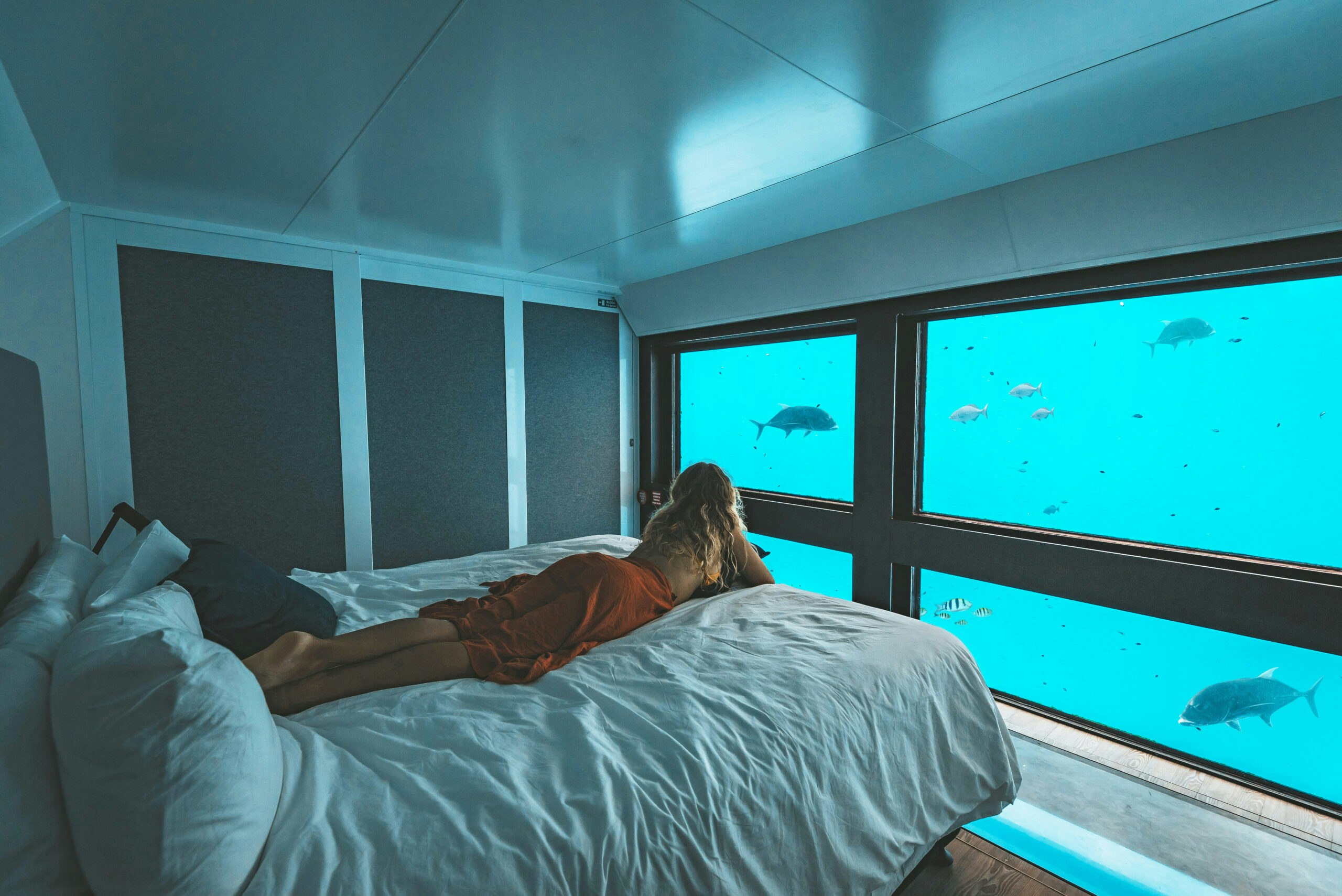
- Arrive at your unique accommodation via a scenic cruise through the Whitsundays
- Two underwater rooms available (king double or twin single options)
- Each room features premium bedding, glass-walled en suite and floor-to-ceiling views of the spectacular underwater world of the Great Barrier Reef
- All meals including breakfast, morning and afternoon teas, lunch and dinner
- All beverages including beer and wine (cocktails and spirits at an additional cost)
- Spectacular dining experience under the stars
- Activities at the reef including a private guided snorkelling tour and semi-submarine tour
- Access to the underwater observatory
- Optional activities (own expense): scuba diving
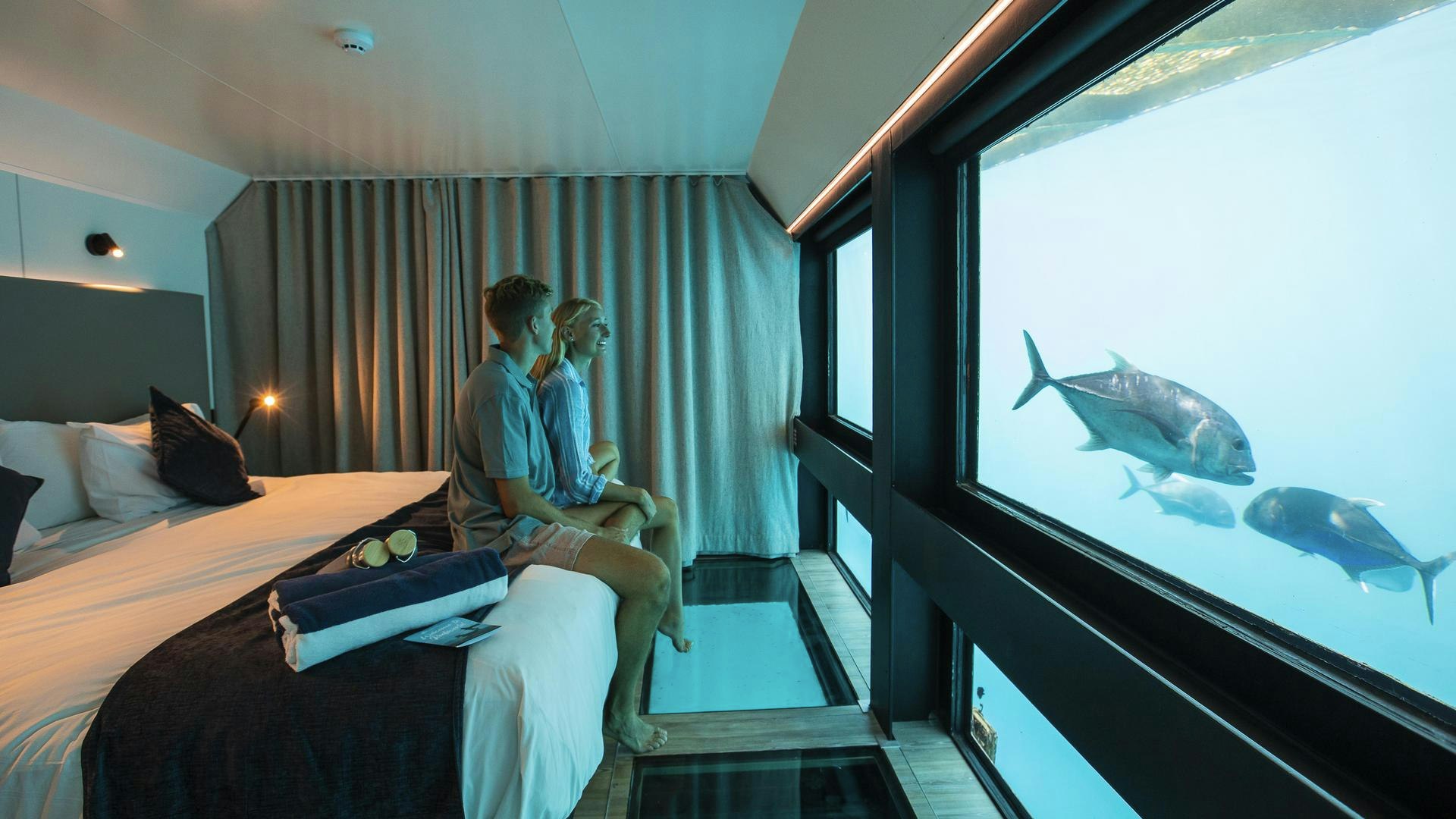
- Small overnight bag
- Change of clothes
- Protective clothing, hat and sunscreen
- Light jacket or sweater for cool or windy days
- Cash / credit card for optional activities
Still have questions? See how Reefsuites FAQ page below.

To ensure your stay at Reefsuites is as comfortable as possible, we ask you fill out the medical disclosure form.
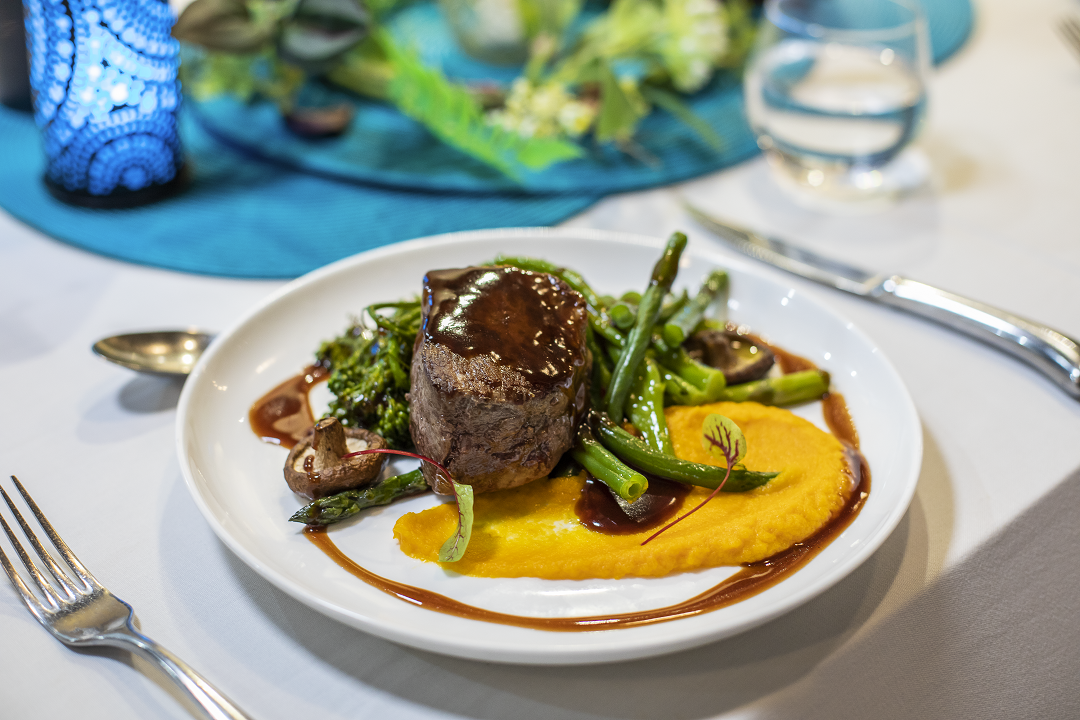
The refurbishment of the Reefworld pontoon is proudly supported by the Queensland Government’s Growing Tourism Infrastructure Fund.
Cruise Whitsundays is proud to support the region’s unique natural environment in delivering this Australian-first tourism experience.
We love where we live and work, so it’s our aim to ensure the Great Barrier Reef can be explored and enjoyed for generations to come.
Our team is working hand-in-hand with the Great Barrier Reef Marine Park Authority to ensure all elements of this project are approached in a sustainable and environmentally conscious manner.
Once work is completed later this year, the refurbished pontoon featuring two Reefsuites will be returned to its former location on Hardy Reef, thus minimising impact on the surrounding marine environment.
In working with the relevant environmental agencies during this project, we are proud to have achieved the largest natural coral transplant ever to be undertaken on the Great Barrier Reef.
More than 4000 pieces of coral have been sustainably removed from old moorings and successfully replanted onto the existing reef wall to rejuvenate the local environment. As part of this, we’ve also established a coral farm to encourage further growth in the area.
Our commitment to the marine environment continues well beyond the launch of this exciting project. The new pontoon will be a hub for public education, providing accurate reef knowledge and conservation guidance to our many visitors.
We look forward to sharing the incredible stories of the Great Barrier Reef with you.

Ready to book?
Please select what you would like to book.
Subscribe to Cruise Whitsundays
Sign up to receive our e-newsletters featuring the latest news, exclusive offers and much more from Cruise Whitsundays and Journey Beyond.
- Tips & Planning
- Travel Product
Best Whitewater Rafting in Colorado for 2024
7 best yellowstone national park tours for 2024, 7 best las vegas shows of 2024.
Best Underwater Cruise Ship Rooms
Underwater cruise ship rooms have become a fascinating trend in the world of luxury travel. These unique accommodations take passengers on a surreal journey beneath the ocean’s surface, providing breathtaking views of marine life and underwater landscapes. With their growing popularity, more cruise lines are now incorporating these extraordinary rooms into their ships, offering passengers an unparalleled experience of sleeping beneath the sea. As travelers seek new and immersive adventures, underwater cruise ship rooms have emerged as a captivating option for those with a penchant for the extraordinary. In this article, we will delve into the allure and appeal of these underwater accommodations, exploring the reasons behind their increasing popularity.
What are underwater cruise ship rooms?
Underwater cruise ship rooms are luxurious accommodations situated below the waterline of a cruise ship, providing guests with a unique and captivating experience. These specially designed rooms allow guests to submerge themselves in the wonders of the underwater world while enjoying their stay onboard.
Features of underwater cruise ship rooms
One of the key features of underwater cruise ship rooms are their expansive windows or glass walls. These large openings provide uninterrupted panoramic views of the mesmerizing marine life and enchanting underwater landscapes. Guests can relax in their rooms and witness the beauty of colorful coral reefs, schools of fish, and other exotic sea creatures right outside their windows.
Benefits of staying in underwater cruise ship rooms
Staying in underwater cruise ship rooms offers guests a unique and unforgettable experience, providing a sense of connection with the ocean and its biodiversity. From the moment they step foot into their room, guests are mesmerized by the breathtaking views that unfold before their eyes.
Uninterrupted views of marine life
Imagine waking up to the sight of colorful fish gracefully swimming by or witnessing the vibrant coral reefs just beyond your window. In underwater cruise ship rooms, you don’t need to step out of your room to immerse yourself in the wonders of the underwater world. The glass walls of these rooms offer uninterrupted views, allowing you to watch the mesmerizing marine life in action from the comfort and privacy of your own space.
As you relax on your bed or sip a refreshing drink while lounging on your private balcony, you can witness the dance of marine creatures unfolding before your eyes. Transition words like “Additionally” or “Moreover” can also be used to enhance the flow of the article and provide additional information or examples.
Current underwater cruise ship room designs
Today, there is an impressive range of designs available for underwater cruise ship rooms. One popular option is semi-submerged suites, which provide guests with the unique experience of sleeping partially underwater. These rooms usually feature large windows above and below the waterline, allowing guests to observe marine life while maintaining a comfortable living space.
In addition, panoramic rooms are becoming increasingly popular. These rooms are typically located on the upper decks of the ship, offering breathtaking views of the surrounding ocean. With floor-to-ceiling windows, guests can immerse themselves in the underwater world while still enjoying the comforts of their luxurious floating accommodation.
For those seeking a truly immersive experience, fully underwater suites are the ultimate choice. These suites are entirely submerged beneath the water’s surface, providing guests with unrestricted 360-degree views of the marine environment. With state-of-the-art technology and design, these suites offer an unparalleled connection to the ocean, making for an unforgettable underwater adventure.
Sustainability considerations
As the popularity of underwater cruise ship rooms continues to grow, designers are increasingly prioritizing sustainability in their designs. Eco-friendly materials, such as recyclable and low-impact materials, are being utilized to reduce the environmental footprint of these rooms. Additionally, measures are being implemented to minimize the impact on marine ecosystems, such as using non-toxic coatings and ensuring responsible waste management practices onboard.
By combining luxury and sustainability, designers are striving to create underwater cruise ship rooms that offer a truly immersive experience while respecting and preserving the fragile marine ecosystems they call home. In doing so, they are paving the way for a more eco-conscious and responsible approach to underwater tourism.
Notable underwater cruise ship room destinations
Several destinations around the world offer impressive underwater cruise ship room experiences, providing guests with the unique opportunity to sleep and unwind beneath the ocean’s surface. One such destination is the Maldives, renowned for its crystal-clear waters and stunning coral reefs. Another popular choice is Dubai, where guests can enjoy the modern and luxurious underwater suites that offer breathtaking views of marine life. Additionally, the Great Barrier Reef in Australia features exceptional underwater accommodations, allowing guests to immerse themselves in the vibrant and diverse marine ecosystem.
Additional attractions and activities
Aside from the incredible experience of staying in underwater rooms, these destinations offer an array of additional attractions and activities to further enhance guests’ underwater adventures. Snorkeling is a popular choice, allowing visitors to explore the stunning coral gardens and encounter colorful fish up close. For those seeking a more immersive experience, scuba diving is available, granting guests the opportunity to dive deeper and witness the wonders of underwater life firsthand. With the presence of professional instructors and guides, guests can safely embark on these water-based activities and create unforgettable memories beneath the surface.
In conclusion, the rise in popularity of underwater cruise ship rooms can be attributed to the growing desire for unique and immersive travel experiences. These rooms offer a truly captivating opportunity for travelers to connect with the marine life and explore the wonders of the underwater world. The enchantment of being able to witness the beauty of the ocean while onboard a luxurious cruise ship is a dream come true for many adventurers. With the increasing demand for these rooms, cruise companies are continuously expanding their offerings to meet the desires of their guests. As underwater rooms become more accessible and affordable, they are becoming a must-try experience for travelers seeking unforgettable memories.
In conclusion, embarking on a journey to explore the depths of the ocean in an underwater cruise ship room is a truly magical and enchanting experience. These innovative underwater accommodations offer a unique opportunity to connect with nature and witness the mesmerizing beauty that lies beneath the waves. Whether you’re a seasoned traveler or a first-time explorer, the allure of underwater cruise ship rooms will undoubtedly captivate your imagination and leave you with memories to last a lifetime. So, gather your sense of adventure and set sail on a remarkable cruise, where the tranquil waters and stunning marine life await you. Dive into this extraordinary world and embark on an unforgettable underwater escapade.
Related Posts
7 best vancouver tours of 2024, best whale watching in santa barbara, 7 best seattle tours of 2024.
Comments are closed.
Type above and press Enter to search. Press Esc to cancel.
Join our Adventure: Get all my insider tips for traveling on a budget
CruiseOverload
How Much Of A Cruise Ship Is Under Water? (& Other FAQs!)
Cruise ships are a marvel of modern engineering, defying the laws of physics to remain afloat and navigate even the most treacherous of waters.
But have you ever wondered how much of these colossal vessels are actually submerged beneath the waves?
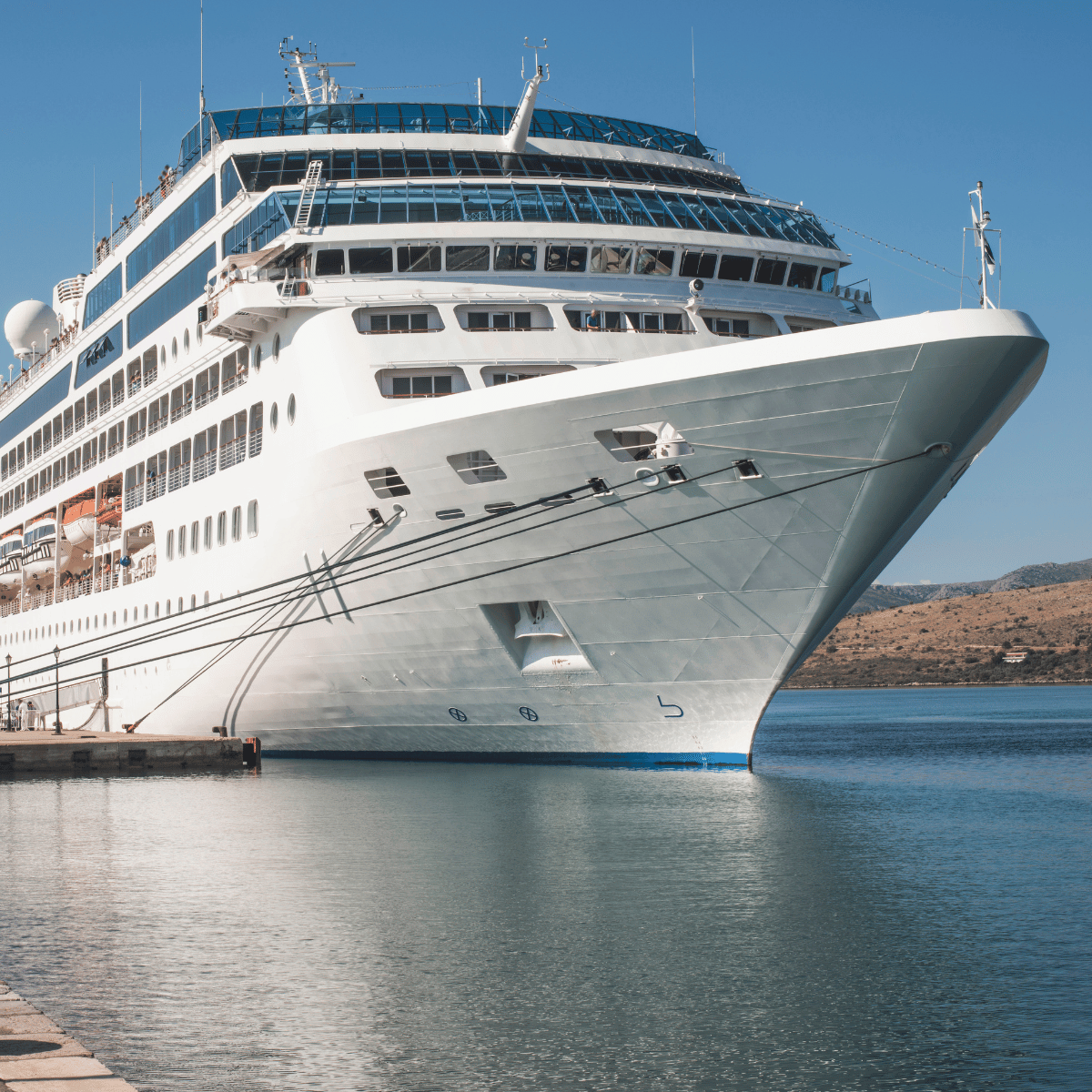
Table of Contents
How Much of a Cruise Ship is Under Water
The larger or higher the ship, the less of it is in water. For example, the amount of cruise ship that is underwater ranges from 20 feet, for a smaller ship, to 31 feet for the largest vessels.
It means that only 10% to 13% of the ship’s hull and superstructure is underwater, which further reinforces how incredible the technology that marine engineers have developed.
Usually, about 10% of a cruise ship’s overall height is under the water. This equates to about 30ft for large cruise ships.
The underwater part of the ship’s hull is typically wide at the back narrowing towards the bow.
Some of the largest cruise ships in the world, like Royal Caribbean’s Oasis-class ships, have a height above the waterline of around 72 meters (236ft 11in), and a draft below the water of around 9.3 meters (30ft 6in).
It’s important to note that the amount of the ship that is underwater can vary depending on a few different factors, such as the weight of the ship and the amount of fuel it’s carrying.
While the amount of a cruise ship that is underwater can vary, it’s generally around 10% of the ship’s overall height.
This is an impressive feat of engineering, and it’s a testament to the incredible technology that goes into designing and building these massive vessels.
What Keeps a Cruise Ship Afloat?
When you look at a massive cruise ship, it’s hard to imagine how it stays afloat in the water. Cruise ships are incredibly heavy, and most of their weight is below the waterline. So, what keeps them from sinking?
The reason a cruise ship stays afloat is buoyancy. Buoyancy is the upward force that a fluid exerts on an object that is immersed in it.
When a cruise ship is placed in water, it displaces an amount of water equal to its own weight. This displacement creates an upward force that counteracts the downward force of the ship’s weight, keeping it afloat.
The shape of the hull also plays a significant role in keeping a cruise ship afloat. The hull is designed to displace water efficiently and minimize resistance as the ship moves through the water.
The wider the hull, the more water it can displace, which creates a greater upward force.
Plus, cruise ships have a low center of gravity, which helps to keep them stable in the water. The weight of the ship is distributed over a large volume, including a wide hull and overall surface area, which spreads over a wider area of water and offers more of an upward force, keeping it afloat.
A combination of buoyancy, the shape of the hull, and the low center of gravity all work together to keep a cruise ship afloat.
The Shape of the Cruise Ship’s Hull
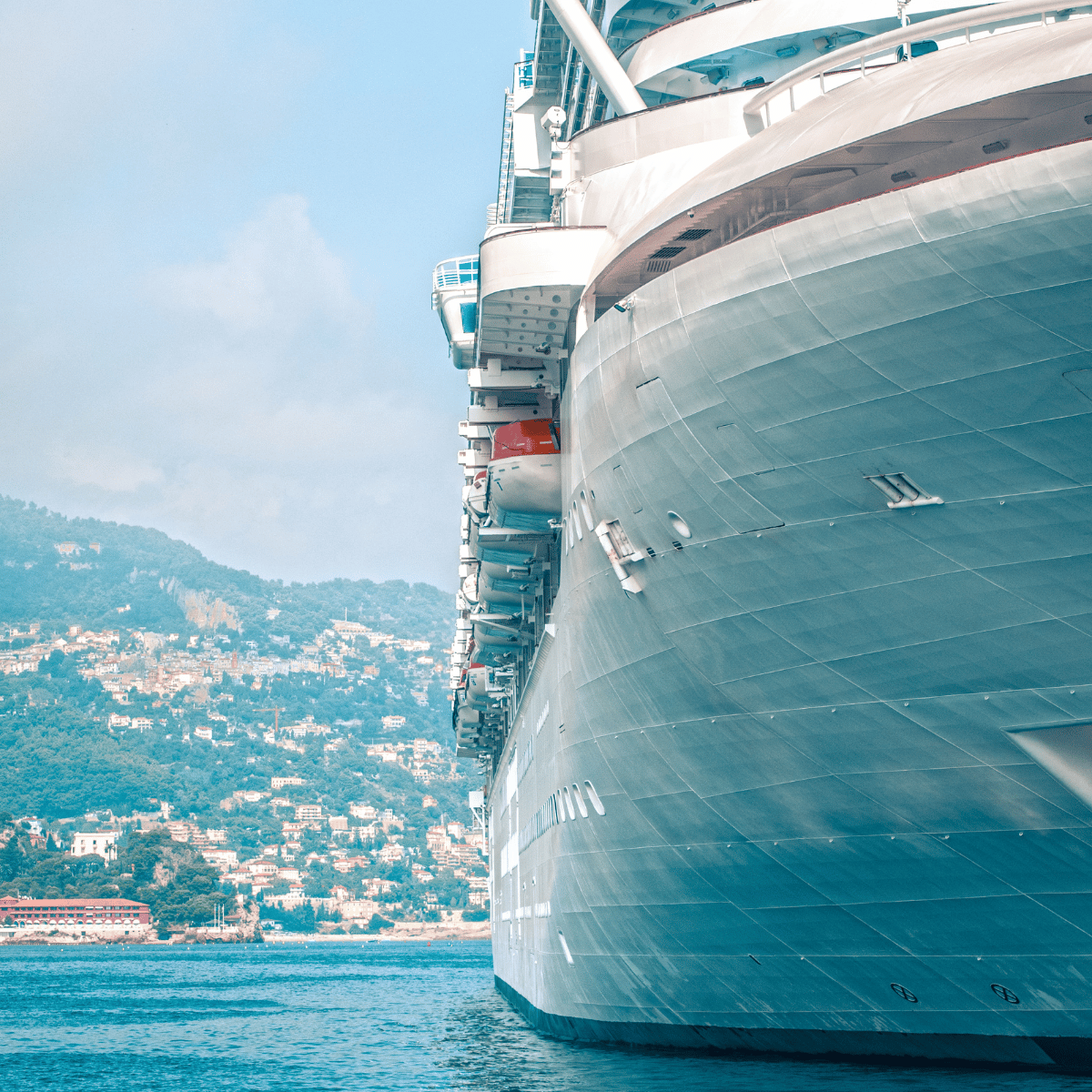
The hull of a cruise ship is the most important part of the vessel, as it is responsible for keeping the ship afloat and stable in the water. The shape of the hull is designed to minimize resistance and maximize efficiency, allowing the ship to move through the water with ease.
Most modern cruise ships have a deep V-shaped hull, which is the most efficient shape for cutting through the water.
This design allows the ship to move quickly and smoothly while minimizing the amount of fuel needed to power the engines.
The V-shaped hull is also designed to reduce the amount of rolling and pitching that the ship experiences in rough seas.
The shape of the hull helps to distribute the weight of the ship evenly, keeping it stable and balanced even in choppy waters.
In addition to the V-shaped hull, many cruise ships also have a bulbous bow. This is a bulb-shaped extension at the front of the ship that helps to reduce drag and increase efficiency.
The bulbous bow helps to push water out of the way as the ship moves through the water, reducing resistance and making the ship easier to maneuver.
Overall, the shape of the hull is a critical factor in the performance of a cruise ship. The V-shaped hull and bulbous bow work together to make the ship more efficient, stable, and maneuverable, ensuring a smooth and comfortable ride for passengers.
Hull Shape and Design
The hull of a cruise ship is a critical component of its design. It is responsible for providing stability, buoyancy, and resistance to the water.
Cruise ships typically have a V or U-shaped hull at the front, which helps to displace water and reduce drag.
The hull is flatter at the back, which helps to reduce the wake and increase speed.
The hull of a cruise ship is designed to withstand the forces of the ocean. It is made from heavy steel panels that are welded together to create a watertight outer skin.
The design of the hull is based on the classification society rules, which ensure that the ship is safe and seaworthy.
The hull of a cruise ship is also designed to reduce the impact of waves and wind. The shape of the hull helps to deflect waves and reduce the amount of water that comes over the bow of the ship.
The design of the hull also helps to reduce the amount of wind resistance, which increases the speed and efficiency of the ship.
On top of the shape of the hull, the design of the ship’s keel is also important. The keel is a structural component that runs along the bottom of the ship.
It helps to provide stability and prevents the ship from rolling over.
The depth of the keel is determined by the size and weight of the ship, as well as the depth of the water it will be sailing in.
Overall, the shape and design of the hull of a cruise ship are critical to its safety, stability, and efficiency.
The hull is designed to withstand the forces of the ocean and reduce the impact of waves and wind.
The shape of the hull helps to displace water and reduce drag, while the keel provides stability and prevents the ship from rolling over.
How Deep Do Cruise Ships Sit in the Water?
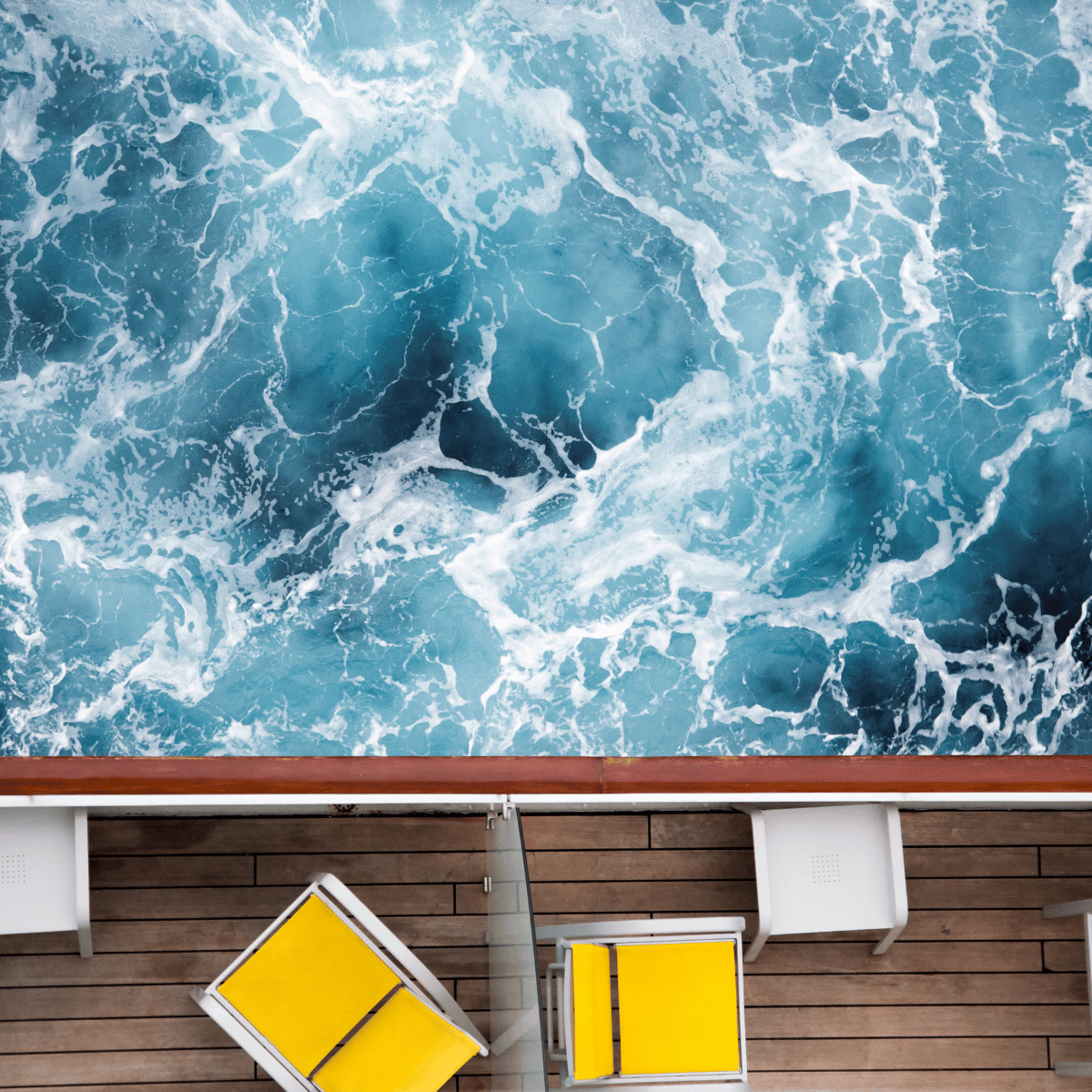
Generally speaking, smaller cruise ships tend to sit lower in the water than larger ones. This is because they have less buoyancy and are more susceptible to being swamped by waves.
Larger ships, on the other hand, tend to sit higher in the water, thanks in part to their greater size and capacity for buoyancy materials.
The depth at which a cruise ship sits in the water is an important factor for both its design and operation. Cruise ships typically sit between twelve and fifteen feet below sea level when fully loaded with cargo, fuel, and passengers.
This helps them remain stable while providing enough buoyancy for them to float.
It’s worth noting that the depth at which a cruise ship sits in the water can vary depending on the conditions.
For example, if the ship is sailing in rough seas, it may sit deeper in the water to provide greater stability.
Similarly, if the ship is carrying a particularly heavy load, it may sit deeper in the water to compensate.
How Many Decks are Underwater on a Cruise Ship?
Depending on the size and type of the cruise ship, there are typically one or sometimes two decks underwater.
These will not be deck names or numbers you’ll see on a deck plan because they are out of bounds for passengers.
The decks that are underwater are usually crew quarters, storage rooms, and machinery spaces.
These areas are not accessible to passengers and are designed to be watertight in case of an emergency.
The crew quarters are located near the bottom of the ship because they are less affected by motion and noise.
It’s important to note that the decks that are underwater do not contribute to the overall height of the ship.
The height of a cruise ship is measured from the waterline to the highest point on the ship. The decks that are underwater are not included in this measurement.
Do Cruise Ships Have Staterooms Underwater?
Cruise ships do not have staterooms underwater. While it might seem like an exciting and unique experience to stay in a room below sea level, there are several reasons why this isn’t possible.
Firstly, cruise ships are designed to be stable above water, where the majority of their weight is located. Having staterooms underwater would make the ship top-heavy, leading to stability issues and potential safety hazards.
Secondly, the underwater environment is not suitable for human habitation. The pressure and lack of light would make it difficult to create comfortable living conditions, and there would be significant safety concerns in the event of an emergency.
Finally, the logistics of building and maintaining underwater staterooms would be incredibly challenging and expensive. It’s simply not practical for cruise lines to invest in this type of accommodation.
Why Don’t Cruise Ships Have Underwater Viewing Areas?
If you’ve ever been on a cruise, you may have wondered why there aren’t any underwater viewing areas on the ship. It would be amazing to see all the marine life and coral reefs as you sail through the ocean.
However, there are several reasons why cruise ships don’t have underwater viewing areas.
It’s important to note that glass is not as strong as steel, which is needed to withstand the constant pressures of the sea. The underwater decks of a cruise ship are already fully utilized and serve the mechanical and crew needs of the ship.
Therefore, adding an underwater viewing area would require significant structural changes and potentially compromise the safety of the ship.
Secondly, the windowed area would also need frequent cleaning due to the buildup of algae and other marine organisms. This would require additional maintenance and resources, which would be costly for a cruise line.
Also, the reality is that 99% of the time, you would see nothing but disturbed water from an underwater viewing area.
The windowed area isn’t as safe as steel in an accident or under pressure, which is a significant concern when the ship is traveling through the ocean.
Overall, while it would be amazing to have an underwater viewing area on a cruise ship, it’s just not practical or safe for companies to implement.
Instead, you can enjoy the beautiful ocean views from the upper decks of the ship and participate in snorkeling or diving excursions at the various ports of call.
How Far Can a Cruise Ship Tip Over?
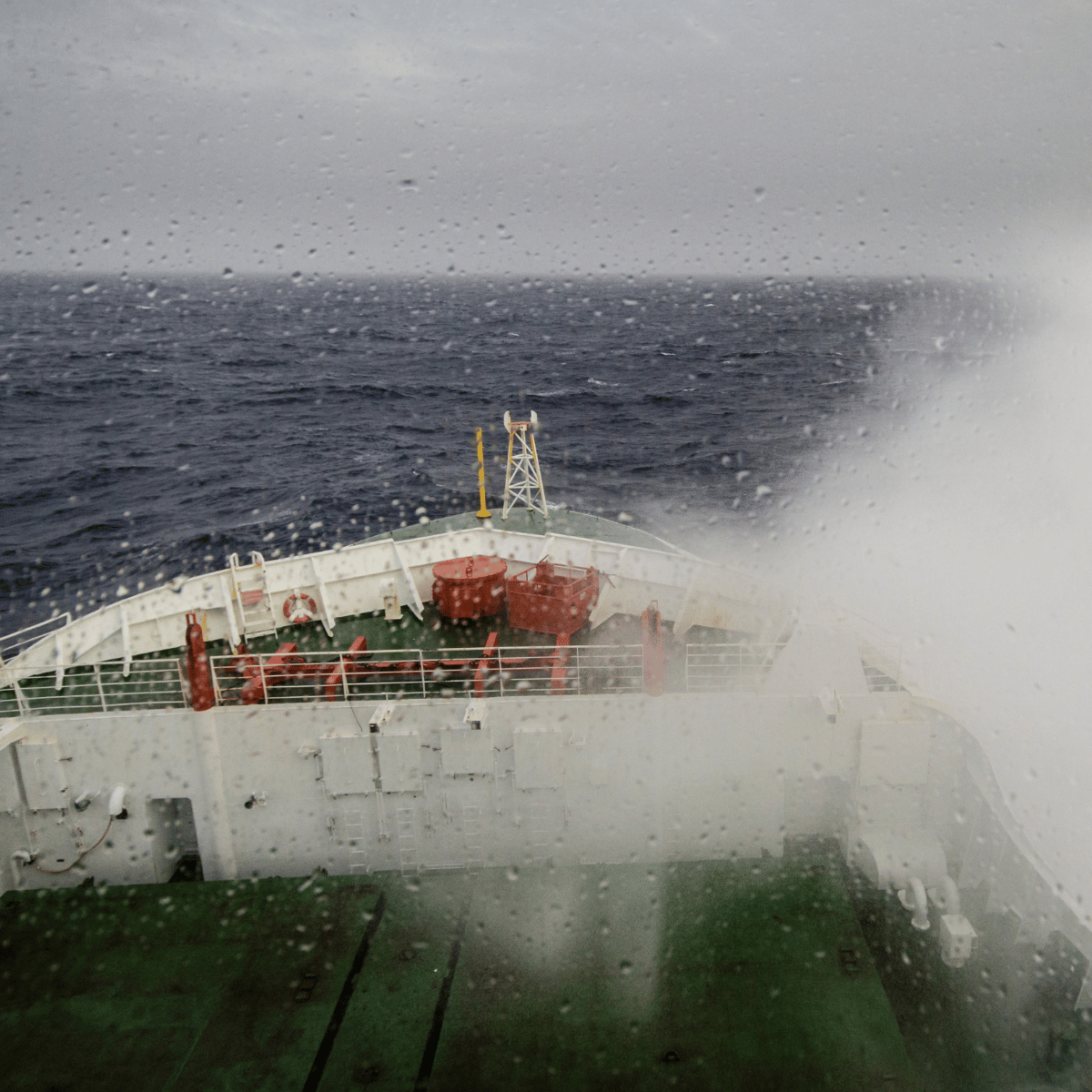
Cruise ships are built with a low center of gravity, which makes them less likely to tip over. The weight of the ship is distributed evenly, with the heaviest parts of the ship located at the bottom. This means that the ship is more stable and less likely to tip over, even in rough seas.
In fact, a cruise ship would have to tip over by more than 25 degrees before it becomes unstable . This is because the part of the hull below the surface of the water is made of much thicker, stronger, and heavier material than the superstructure. Even if the ship were to tip over, it would quickly right itself, thanks to the weight of the hull.
It’s important to note that cruise ships are also equipped with advanced stabilizers that help to reduce the amount of rolling and pitching in rough seas.
These stabilizers work by extending out from the side of the ship, creating a counterforce to the waves and reducing the amount of movement felt by passengers.
Similar Posts
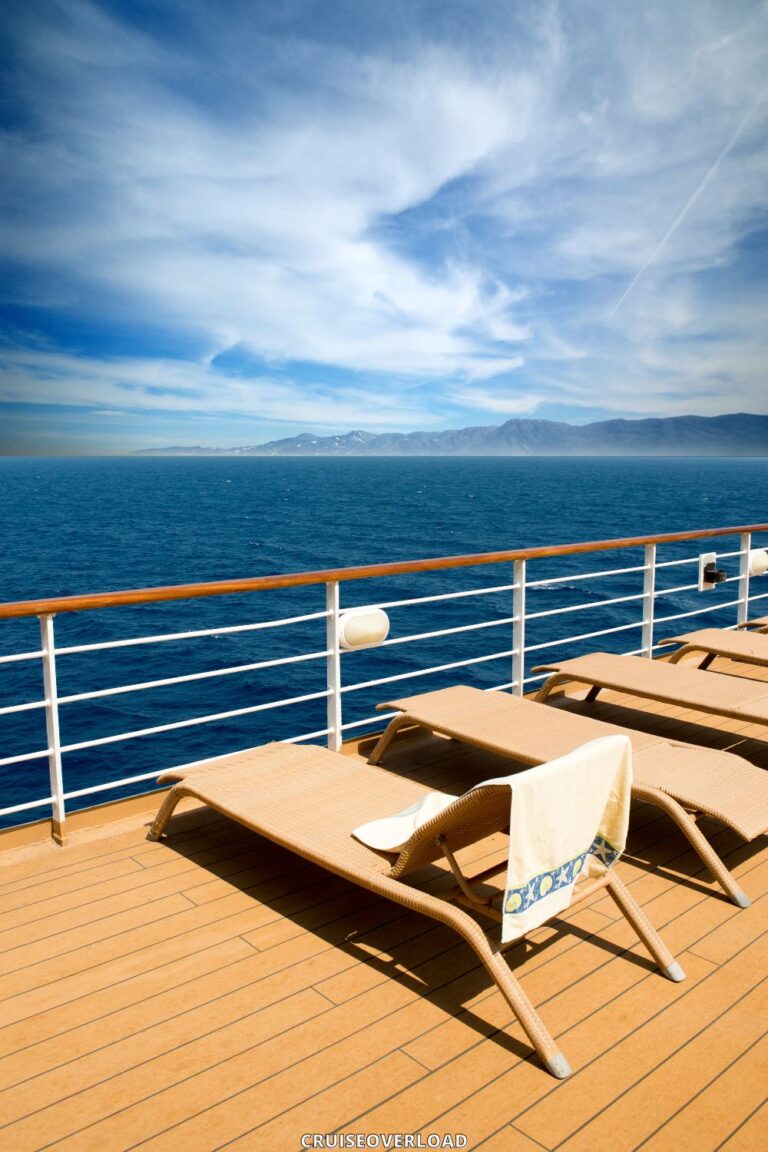
Do Cruise Ships Have WiFi (Yes, BUT…)
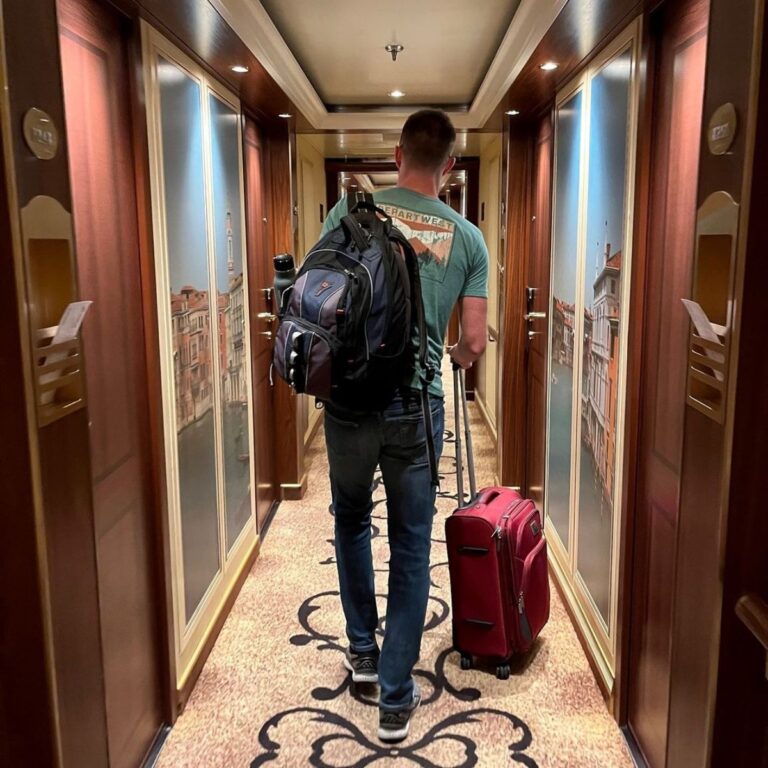
The Best Deck on a Cruise Ship For Every Type of Cruiser

Why Are River Cruises So Expensive? (& Are They WORTH It?)
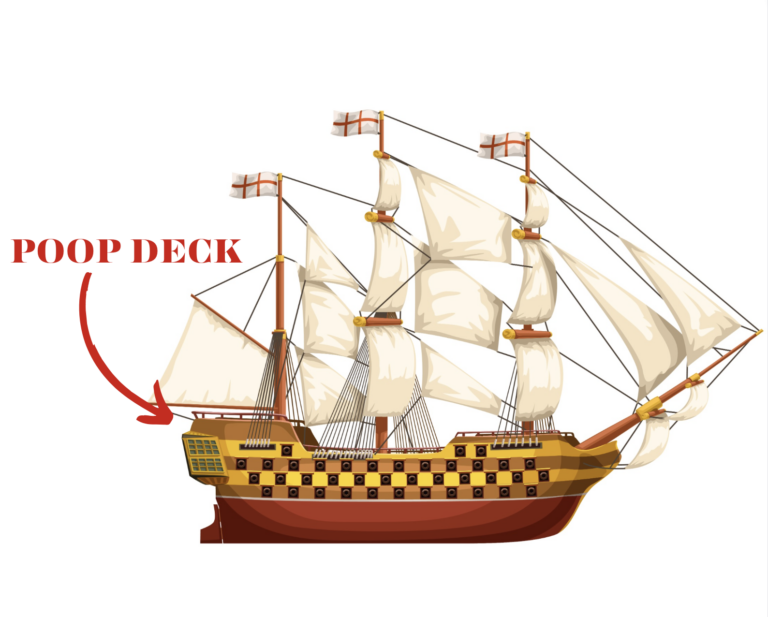
Poop Deck Meaning: WTF Are They?!

Do Cruise Ships Have Jails? (& What Happens If You Break The Law On-Board)

Can A Cruise Ship Tip Over? (Separating Fact From Fiction!)
Leave a reply cancel reply.
Your email address will not be published. Required fields are marked *
Save my name, email, and website in this browser for the next time I comment.
- CRUISE TIPS
- Carnival Cruise Lines
- Celebrity Cruise Line
- Disney Cruise Line
- Holland America Line
- MSC Cruises
- Norwegian Cruise Line
- Princess Cruises
- Royal Caribbean
- Virgin Voyages
- Windstar Cruises
- Travel Deals
- CRUISE SHIP TRACKER
- Port Webcams

Cruise ships are impressive vessels that offer a world of entertainment and leisure to passengers. Have you ever wondered how much of a cruise ship is underwater?
The weight of the 50 largest cruise ships exceeds 100,000 gross tons, and the average height of Royal Caribbean International cruise ships is 14 decks. But it’s the part below the waterline that genuinely fascinates us.
How Much of a Cruise Ship is Under Water?

Archimedes’ principle plays a crucial role in understanding the physics of water displacement . According to this principle, ships must displace equal water to their weight, ensuring stability. Wide hull designs help these enormous vessels achieve this balance, with around 30 feet of the average large cruise ship sitting below the water’s surface.
Key Takeaways:
- The weight of the 50 largest cruise ships exceeds 100,000 gross tons.
- The average height of Royal Caribbean International cruise ships is 14 decks.
- Approximately 30 feet of the average large cruise ship sits underwater.
- Archimedes’ principle explains the physics of water displacement .
- Wide hull designs help maintain the stability of cruise ships .
Cruise Ship Weight, Length, and Height Statistics
When it comes to cruise ships, size truly matters. These massive vessels are engineering marvels designed to provide passengers with a luxurious and unforgettable experience. Let’s look at impressive cruise ship weight, length, and height statistics.
One of the most remarkable aspects of cruise ships is their sheer weight. The 50 largest cruise ships in the world exceed a whopping 100,000 gross tons. To put that into perspective, that’s equivalent to the weight of approximately 71,000 standard-sized cars! The weight of these floating giants is necessary to ensure stability and balance in the water.
When it comes to length, cruise ships are nothing short of extraordinary. Royal Caribbean International owns the four largest cruise ships, and the average length of these vessels is an impressive 325 meters. To give you a sense of scale, that’s approximately 20% longer than the iconic Titanic. These colossal ships provide ample space for a wide range of amenities and activities, ensuring that passengers can enjoy a variety of experiences onboard.
As for height, cruise ships tower above the water with their impressive size. For example, Royal Caribbean International cruise ships reach approximately 14 decks high. From the top deck, passengers can enjoy breathtaking views of the surrounding ocean and the various ports of call throughout their journey.
The Physics of Water Displacement

We must delve into water displacement physics to understand how much of a cruise ship is underwater. Archimedes’ principle , a fundamental concept in fluid mechanics, explains the relationship between the weight of an object and the fluid it displaces. According to this principle, the upward buoyant force exerted on an object submerged in a fluid equals the weight of the fluid displaced by the object. In the case of cruise ships, they must displace an amount of water equal to their weight to maintain stability.
This is where the wide hull design of cruise ships comes into play. The wide hull provides a larger surface area for the ship to push against the water, allowing for the displacement of a greater volume of water. This compensates for the weight of the ship and helps maintain stability. On average, approximately 30 feet (9 meters) of a large cruise ship sits underwater, contributing to its buoyancy.
The Role of Ship Stability
Ship stability is a critical factor in the design of cruise ships. For a ship to be stable, its center of gravity must be low, and its buoyancy must be high. The wide hull design helps achieve this stability by distributing the weight of the ship over a larger area and allowing for a more significant amount of water displacement . This helps maintain equilibrium even in rough seas and ensures the safety and comfort of passengers on board.
Water displacement and ship stability principles are crucial in designing and constructing cruise ships. By carefully considering these factors, engineers create vessels that can withstand the forces of nature and provide an enjoyable experience for passengers around the world.
Table: Comparison of Cruise Ship Design Features
What’s on the lowest deck.

The lowest deck on a cruise ship , known as the orlop, is where you’ll find a range of essential components necessary for the ship’s operations . While it may not be an area that passengers typically have access to, it plays a crucial role in maintaining the vessel’s functionality.
One of the notable features on the lowest deck is the presence of fuel tanks , which store the large quantities of fuel needed to power the ship throughout its journey. Additionally, you’ll find freshwater reserves essential for the ship’s various needs, such as drinking water, cooking, and sanitation.

Other facilities on the lowest deck include the ship’s laundry room , medical center , and engine rooms . The laundry room handles the massive amount of laundry generated by passengers and crew, ensuring clean linens and clothing are always available. The medical center provides necessary medical care for any onboard emergencies and is equipped to handle a range of medical situations. The engine rooms house the heart of the ship , where the engines and propulsion systems are located, ensuring the vessel can navigate through the water smoothly.

While it may sound intriguing, passengers generally cannot access the lowest deck. However, in some cases, passengers can book accommodations on this deck to alleviate seasickness, as being closer to the ship’s center of gravity can provide a smoother experience.
Although passengers may not have access to the lowest deck, it is critical to a cruise ship’s infrastructure. The various facilities and systems found here contribute to a cruise’s smooth operation and overall experience.
Cruise Ship Layout: Navigating Different Locations on a Cruise Ship

When exploring a cruise ship, it’s essential to familiarize yourself with its layout to make the most of your experience. Cruise ships are vast and offer various locations and amenities for passengers. Understanding the different areas and their functions can help you navigate the ship more efficiently.
The Different Locations on a Cruise Ship
Let’s take a closer look at some of the key locations you’ll find on a typical cruise ship:
- Aft: Referring to the backmost part of the ship, you can often find outdoor lounges and dining areas with stunning views of the wake .
- Bow: The front part of the ship usually offers observation decks or outdoor areas to enjoy panoramic views.
- Bridge: The main control section of the ship, where the captain and crew navigate and operate the vessel.
- Cabin: The private living quarters for passengers, ranging from interior cabins to luxurious suites.
- Deck: Each level of the ship is referred to as a deck, numbered from the bottom up.
- Galley: The ship’s kitchen is where talented chefs work magic to create delicious meals for passengers.
- Hull: The central body of the ship, serving as the main structure and containing various compartments.
- Lido Deck: An entertainment area on the ship, often featuring pools, lounges, bars, and live music.
- Midship: The middle section of the ship provides easy access to various areas on different decks.
- Port: The left side of the ship when facing forward.
- Starboard: The right side of the ship when facing forward.
- Stern: The backmost part of the ship is where you can find additional outdoor areas and sometimes specialty restaurants .
By familiarizing yourself with these locations, you can easily navigate the ship and make the most of your cruise experience. Whether you’re looking to relax by the pool, enjoy a gourmet meal, or take in breathtaking views, understanding the cruise ship layout will help you find your way to the perfect spot.
Navigating Cruise Ships in Various Types of Water

When it comes to navigating cruise ships, the depth of the water plays a crucial role. Cruise ships must dock in water at least 25 to 50 feet deep , considering the ship’s draught . The draught is the measurement of water between the waterline and the ship’s bottom hull. It determines how much of the ship is submerged and affects its stability. The deeper the water, the less the ship is visible above the surface.
On average, approximately 40% of a cruise ship sits below water. This percentage remains constant, regardless of the ship’s size or the water conditions. It’s important to note that the amount of an underwater cruise ship is best conceptualized as a percentage of the ship rather than in feet. This percentage is determined by the ship’s water displacement, which depends on its length, breadth, and draft. Water displacement refers to the volume of water the ship displaces as it floats. It plays a key role in ensuring the ship’s buoyancy and stability.
Cruise ships are equipped with advanced systems and technologies to ensure safe navigation. This includes radar systems that help captains monitor the surrounding water conditions, allowing them to navigate around bad weather areas. Additionally, cruise ships adhere to specific docking requirements based on water depth and other factors. These requirements help guarantee the safety of both the ship and the passengers on board.
In conclusion, navigating cruise ships in various types of water requires careful consideration of the ship’s draught , water depth, and other factors. The design and buoyancy of cruise ships play a crucial role in ensuring their stability and safety. With their advanced technology and adherence to docking requirements, cruise ships are able to provide a comfortable and enjoyable experience for passengers, regardless of the water conditions they encounter.
Frequently Asked Questions
How much of a cruise ship is underwater.
The number of underwater cruise ships, also known as the draft, depends on the size and weight of the cruise ship. Generally, for large modern cruise ships, the amount of the ship in the water equates to about 30ft. This is due to the technology that marine engineers have developed to ensure that the ship displaces as much water as needed to keep it stable and prevent it from tipping.
How does a cruise ship stay afloat?
A cruise ship stays afloat by displacing a volume of water equal to its own weight. This means that the weight of the cruise ship is offset by the upward force of the water it displaces. Marine engineers have designed the hull and other parts of the ship to ensure it can move through the water while remaining stable and buoyant.
What parts of a cruise ship are underwater?
The parts of a cruise ship that are underwater include the front of the ship, known as the bow, and varying sections along its length, depending on the ship’s size, weight, and design. When the ship is in motion, the hull and other underwater parts displace water to maintain the ship’s stability and balance.
How much water does a cruise ship displace?
Depending on the size of the cruise ship, it can displace a significant amount of water. To keep the ship stable, marine engineers have ensured it can displace enough water to counteract its weight, typically around ten times the ship’s volume. For large modern cruise ships, this can equate to displacing an area of water that offers stability and prevents tipping.
What technology is used to keep a cruise ship stable in the water?
Marine engineers have developed technology that ensures a cruise ship remains stable in the water. This includes the design of the hull and other underwater components and advanced stabilizing systems to counteract the forces of wind and waves. This technology is crucial in keeping the ship balanced and safe during its journeys.
How is a cruise ship prevented from tipping over?
To prevent a cruise ship from tipping over, marine engineers have designed the ship and the amount of water it displaces to create stability. By ensuring that the ship displaces enough water and that its weight is balanced, they prevent tipping and ensure the ship’s and its passengers’ safety.
How much water is kept by a cruise ship to stay afloat?
A cruise ship keeps as much water as needed to ensure stability and buoyancy. The design and technology of modern cruise ships allow them to displace a volume of water equal to their weight, which keeps them afloat and prevents them from sinking or tipping over.
What keeps a large cruise ship stable while sailing through the water?
Large cruise ships are kept stable while sailing through the water by the technology and design that marine engineers have developed. This includes the shape of the hull, advanced stabilizing systems, and the ship’s ability to displace enough water to keep it balanced and afloat, even in varying weather and sea conditions.
How much water does a modern cruise ship displace?
Modern cruise ships are designed to displace enough water to stay afloat and stable. Depending on the size and weight of the ship, it can displace a significant amount of water – typically enough to create an area of stability that prevents tipping and ensures the safety of the ship and its passengers.
How do modern cruise ships prevent tipping and stay afloat?
Modern cruise ships are equipped with technology and design features that ensure they displace enough water to create stability and prevent tipping. This, combined with the ship’s weight, helps to keep the ship afloat and stable as it moves through the water.
Final Thoughts: The Design and Buoyancy of Cruise Ships
From their comprehensive hull designs to stabilizers and ballast tanks, cruise ships are meticulously engineered to ensure buoyancy, stability, and safety. The unique design elements of these magnificent vessels create a comfortable and enjoyable experience for passengers as they embark on their adventures.
The wide hull design of cruise ships plays a crucial role in water displacement, allowing them to displace an equal amount of water to their weight. This design creates upward pressure, ensuring the ship remains afloat and stable. Stabilizers and ballast tanks are strategically placed to maintain a low center of gravity, further enhancing the ship’s stability.
Cruise ships are designed to withstand a variety of weather conditions, including rough waters. Safety features such as monitoring systems and radar assist captains in navigating around areas with bad weather. These features, along with the careful engineering of the ship’s design, ensure the safety and well-being of passengers and crew at all times.
As marvels of engineering, cruise ships demonstrate how meticulous planning and design contribute to a seamless and enjoyable cruise experience. With their emphasis on buoyancy, stability, and safety features, these vessels allow passengers to relax and enjoy their vacation , knowing they are in capable hands.

Related Articles
Four ways to relax this coming summer, the best jackpot games at australian casinos in january 2024, 3 unique theme nights you shouldn’t miss when on a cruise ship.

Popular Categories
- Oceans 1545
- Cruise News 1322
- Cruise Tips 346
- Carnival Cruise Line 345
- River Cruises 229
- Royal Caribbean 174

© Copyright 2024 - Cruise Addicts
- Affiliate Disclaimer
- Privacy Policy

How Much Of A Cruise Ship Is Under Water?
Many new cruisers often ask the question, “How much of a cruise ship is underwater, and why don’t they sink ?” For me, it was a major curiosity until I got an answer. So, if you’re also one who wants to know the answer, you’re at the right place.
Basically, the ship’s depth under the water depends on the size of the ship and the amount of load being carried. Generally, around 10% of the ship’s height, or approximately 30 feet for the biggest cruise ships and 20 feet for the smaller ships, is underwater,
Sounds interesting, right? But wait, the science behind the ship floating is even more interesting, due to which they run seamlessly without being unstable.
So get ready, my fellow cruisers. I’ve discussed all the things in this article that will help you clear your doubts. The next time you cruise, you’ll be happy to see the facts with your own eyes. So let’s get started.
Table of Contents
Cruise Ship Weight, Length, and Height Statistics

Before understanding the depth at which a cruise ship sits, it’s important to learn about the cruise ship’s weight, length, and height statistics.
The 50 largest cruise ships in the world, including those from Royal Caribbean and Carnival Cruise Line, weigh over 100,000 gross tons.
Regarding height, the average Royal Caribbean Cruise Ship measures 14 decks (stories) high.
In terms of length, these ships are approximately 20% longer than the Titanic, with an average length of 325 meters.
You can also check out my comprehensive comparison of modern ships and the Titanic.
How Does A Cruise Float?
Cruise ships float above the water line and don’t sink because of the following factors:
1- Hull Shape And Design
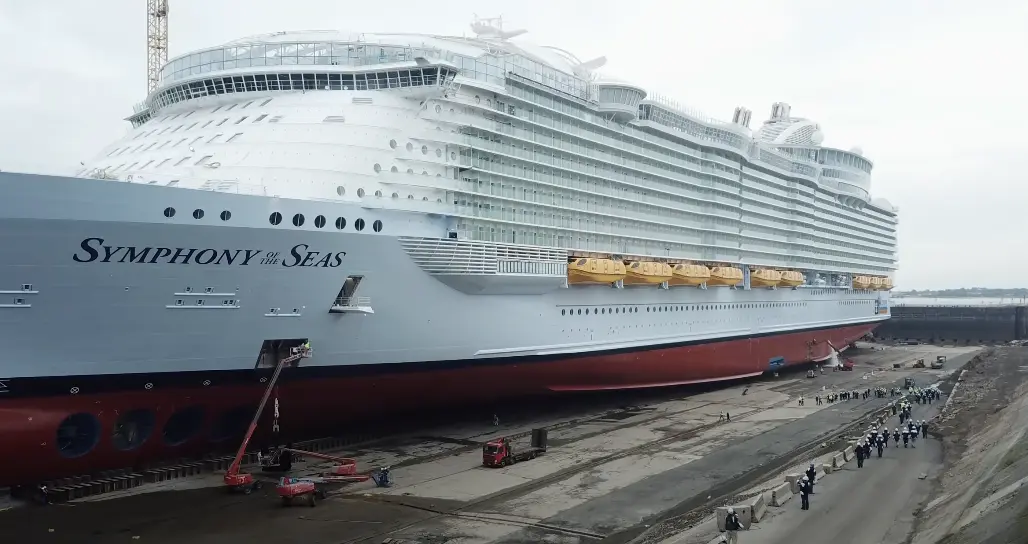
The ship’s hull and design are the major reasons why it doesn’t sink.
These U-shaped hulls push the water outward and downward, creating a buoyant force for the ship.
Not only that, but this massive hull also maximizes the water displacement, creating a lifting effect. A lot of modern cruise ships, including Royal Caribbean and Carnival Cruise Line, feature a V-shaped hull design to cut through the water efficiently.
Due to these hulls, the ship glides through the water with ease, maintaining stability and efficient floatation.
For physics lovers, let me explain with a principle. The hulls follow Archimedes’ principle, which states that the floating object is pushed up by a force equal to the weight of the liquid it displaces.
So yeah, now you must have a clear understanding of the science behind ship floatation and why it doesn’t sink.
How Deep Do Cruise Ships Sit In The Water?
Generally speaking, the answer varies due to the ship’s size.
Smaller cruise ships tend to sit lower in the water than the larger ones. It’s because they have less buoyancy and are more susceptible to being swamped by waves.
Both ship’s design and operation play an important role in the depth at which a cruise ship sits in the water.
Cruise ships typically sit between 12-15 feet below sea level when fully loaded with cargo, fuel, and passengers.
This depth helps the sea voyagers to stay stable while providing enough buoyancy for them to float.
However, it’s important to note that the depth of the cruise ship in the sea also depends on physical factors like rough seas and heavy load.
If the ship is sailing in rough seas, it may sit deeper in the water for increased stability. Likewise, for the heavy load, the depth of the ship will also be greater.
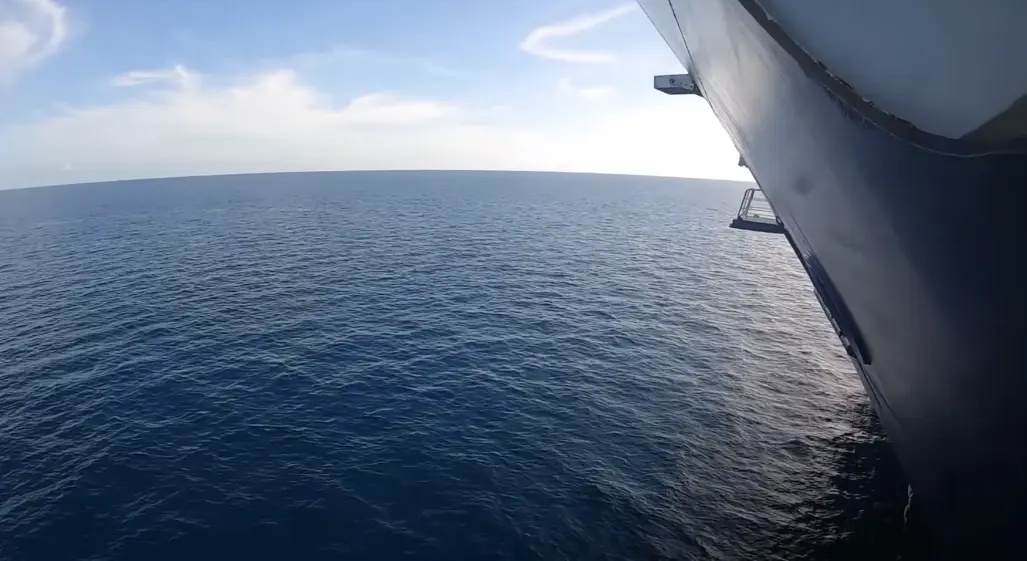
How To Measure The Depth At Which Ship Sit In The Water?
For measuring the depth at which a ship sits in the water, we look at the draft.
The draft size varies from ship to ship depending on the vessel’s size, fuel, and ballast.
Usually, cruise ships have a draft between 5 meters (16ft 5in) and 10 meters (32ft 10in).
The large cruise ships like Anthem of the Seas have a draft of 8.5 to 8.8 meters (about 28 feet). Likewise, the largest cruise ships, Royal Caribbean Oasis-class, have a draft of 9.3 meters (30ft 7in).
Smaller cruise ships typically have a draft of less than 7m (22ft 9in) so they can enter smaller ports.
Generally, the ship’s draft sizes are essential for determining the port the ship can enter.
I’ve mentioned the two terms that you’ll often hear when it comes to measuring the depth at which a ship sits in the water.
1- Draft Marks
Draft marks are the major indicator of how deep the ship is sitting in the water. These marks are located at the bow and stern.
With these marks, one can easily assess the ship’s draft, which is the depth from the waterline to the lowest point of the hull.
Next time, I suggest you focus on these marks to learn how much the cruise ship on which you’re traveling is submerged in the water.
2- Load Line
The second way I discovered this was on my last cruise ship on Royal Caribbean when I was sailing on Icon Of the Seas. It’s called the Plimsoll mark or load line.
This line is present at the center of a ship’s side, which indicates the maximum safe draft. It was named after Samuel Plimsoll.
In actuality, this line sets the limit to which the vessel can be loaded. There’s a line passing through the circle highlighting this maximum point, with a ladder arrangement showing different drafts for specific conditions.
The letters on the mark (T for Tropical, S for Summer, and W for Winter) denote maximum drafts under certain conditions.
Amazingly, the S load line is used to prevent overloading, as sailing with this mark submerged is illegal.
The N and V markings represent the ship’s classification society, ensuring adherence to international standards. This load line helps measure the ship’s depth in the water, ensuring compliance with safety regulations.
Why Do Cruise Ships Have Flat Bottoms?
Cruise ships work on the principle of buoyancy given by Archimedes’ Principle. So, for this reason, they have flat bottoms for increased stability and fuel efficiency.
Flat bottoms are highly beneficial in providing a larger surface area, thus increasing stability in calm as well as in moderately rough seas.
Not only that, flat bottoms allow for better weight distribution, preventing the ship from rolling excessively.
The Physics of Water Displacement
If you don’t enjoy physics like my husband, feel free to move on to the next section. But if you really want to understand the concept of a ship underwater, I suggest you have a look at this section.
As I already mentioned, the cruise ship’s underwater size is based on the Archimedes Principle, which explains the relation between the weight of an object and the fluid it displaces.
To make it simpler in cruise ship terms, this principle states that the ship must displace an amount of water equal to its weight to maintain stability.
The Role Of Ship Stability
Stability is a major concern while designing cruise ships. Several measures are taken to keep the ship stable, especially in the rough seas.
But do you know the science behind the ship’s stability? It’s all due to the low center of gravity and high buoyancy.
For a ship to be stable, its center of gravity must be low, and its buoyancy must be high.
As mentioned earlier, the large ship hull design helps the ship to be more stable by distributing the weight of the ship over the larger area and allowing for a more significant amount of water displacement.
With all these factors, a stable vessel is designed to provide an enjoyable experience to passengers even in the rough seas.
Read more about cruise stability here.
Explanation Of Cruise Ship Design Features
How Much Water Does A Cruise Ship Hull Displace?
The amount of water displaced by a cruise ship’s hull follows Archimedes’ principle. According to this principle, the cruise ship displaces an amount of water equal to its own mass.
Let’s take an example of the largest cruise ship, Symphony of the Seas, which weighs approximately 228,000 tons and would displace 228,000 tons of water.
Now, you’ll have a clear understanding of how much water is displaced by the ship’s hull. Thanks to Archimedes’ Principle.
What Keeps a Cruise Ship From Tipping Over?
Cruise Ships are designed so efficiently that they are safe and stable.
A lot of people are curious to know why cruise ships don’t tip over, even if they’re so huge.
So, the combination of a wide hull, low center of gravity, fuel, and ballast tanks filled with water maintains a great balance and keeps a cruise ship from tipping over in rough seas.
What Extra Steps Are Taken For Extra Stability In Rough Seas?
The cruise ship’s stability totally depends on the center of gravity. It’s kept low to keep the ship stable, but it can be moved up or down by adjusting weights within the vessel.
The most obvious is ballast water and fuel. In extreme cases and rough seas, cruise ship swimming pools could be drained to provide additional stability as the weight of so much water on the upper decks will make the center of gravity higher.
Most cruise ships have a mechanical stabilizing system, and some have bilge keels, which also help to limit the amount of roll.
How Many Decks Are Underwater on a Cruise Ship?
The number of underwater decks on a voyage depends on its size and type.
However, cruise ships usually have one or two decks underwater, but passengers won’t find them as these decks are not named or numbered.
These are usually out of bounds for passengers as they contain various ship’s operational things and consist of hundreds of crew cabins to provide living and sleeping space for them.
So the next time you cruise, keep in mind that if you’re on Deck 1, you’re not the lowest on the ship. There are other decks under you.
The lower decks also need to house the following:
- Various engine and mechanical rooms
- Food storage units
- Medical Center
- Crew-only social rooms
Do Cruise Ships Have Staterooms Underwater?
No, Cruise ships don’t offer underwater staterooms. However, there are cabins only for crew members to live and sleep in.
These are quite small and windowless as compared to those for cruise guests.
So, if you’re planning to book the underwater cabins, forget it, as they are only limited to the onboard crew members.
Why Don’t Cruise Ships Have Underwater Viewing Areas?
At the beginning of my cruise journey, I also asked my husband why the cruise line doesn’t offer underwater viewing areas to let us see all the marine life and coral reefs as we sail through the ocean.
But later on, I got an answer by myself. There are several reasons why cruise ships don’t have underwater viewing areas.
- Strength: Glass is not as strong as steel, which is crucial for handling sea pressures.
- Utilization: Underwater decks serve mechanical and crew needs, making structural changes challenging.
- Safety Concerns: Adding viewing areas may compromise ship safety during accidents or pressure.
- Cleaning Challenges: Windowed areas would require frequent cleaning due to algae buildup.
- Maintenance Costs: Regular cleaning and maintenance would be costly for cruise lines.
- Practicality: 99% of the time, an underwater viewing area would show disturbed water.
What Parts of a Cruise Ship Are Underwater?

Now, after knowing the ship’s floating science and the depth at which it’s underwater, you must be thinking about the vessel parts underwater.
These parts include:
- Bulbous Bow: The front part of the ships have a bulbous bow, a big projection that sticks out and changes how the water moves along the side of the ship.
- Propellers: At the stern, there are propellers designed to push through the water and move the ship forward or even backward in some cases.
- Hull: The U or V-shaped hulls displace large amounts of water, which increases the buoyancy force required to keep such large, heavy vessels floating.
How Much Water Does a Cruise Ship Need to Dock?
A cruise ship usually needs about 9 to 12 feet more than its draft to dock safely.
Let’s suppose that a ship has a 30-foot draft; it requires water depths of at least 40 feet for safe sailing, accounting for its bouncing movement.
Where’s the Most Of the Cruise Ship Weight?
The majority of the ship’s weight is underwater to maintain the ship’s low center of gravity for extra stability in rough seas.
What’s On The Lowest Deck?
The lowest deck of the vessel, also known as orlop, it’s just below the cove balconies and contains essential components necessary for the ship’s operation including engine room. Also, it contains crew-only cabins for their living and sleep.
Final Words
Hopefully, now you have an answer to the question of how the cruise ship floats and its depth under the water.
Next time, you’ll enjoy your cruise even more after seeing all the above facts and science with your eyes.
Have a safe and enjoyable cruise.
I am Zoe Grace, a passionate enthusiast of cruise ships. With a decade of firsthand experience in the cruising industry, I have developed a deep understanding of the intricacies and wonders that these majestic vessels hold.
Now, I am excited to embark on a new journey as an author, sharing my knowledge and insights with readers who share my fascination for the world of cruising.
Join me as we explore the captivating world of cruise ships together.
Similar Posts

17 ESSENTIAL THINGS TO PACK IN YOUR CRUISE CARRY-ON BAG

Summer Cruise Outfits For Women

15 Cruise Embarkation Day Tips Every Cruiser Should Know
![cruise ship underwater rooms How Long Is A Cruise To The Bahamas? [Expected Time]](https://cruiseshipmania.com/wp-content/uploads/2023/09/Carnival-Cruise-Menu-6-768x448.jpg)
How Long Is A Cruise To The Bahamas? [Expected Time]

9 Cruise Shore Excursion Day Tips

Essential Tips for First-Time Cruisers: Smooth Sailing
Winter is here! Check out the winter wonderlands at these 5 amazing winter destinations in Montana
- Plan Your Trip
How Much Of The Cruise Ship Is Underwater
Published: December 16, 2023
Modified: December 28, 2023
by Elli Banta
- Sustainability
Introduction
When it comes to cruise ships, one question that often arises is how much of the ship is actually underwater. After all, these massive floating hotels seem to defy gravity as they glide effortlessly through the water. Understanding the design of a cruise ship can shed light on this intriguing question.
Cruise ships are marvels of engineering, carefully constructed to ensure both stability and comfort for passengers. They are designed with multiple levels and compartments, each serving a specific purpose. To determine how much of the ship is underwater, we need to examine the different areas of the vessel.
In this article, we will explore the various parts of a cruise ship and see how they relate to its position in the water. From the hull to the engine room to the passenger areas, we’ll take a comprehensive look at what lies above and below the waterline. So, let’s dive in and navigate the depths of a cruise ship’s design!
Understanding the Design of a Cruise Ship
A cruise ship is a complex structure with a design that balances functionality, stability, and aesthetics. To understand how much of the ship is underwater, it’s crucial to have a basic understanding of its design.
The ship is divided into various levels or decks, each serving specific purposes. The lower decks house essentials like the engine room, fuel tanks, and storage areas. As we move up, we encounter passenger areas, including cabins, dining rooms, entertainment venues, and recreational facilities.
The ship’s design is built around the concept of buoyancy. Buoyancy is the force that allows the ship to float on the water. The ship’s hull, which is the outermost layer, is carefully designed to displace a large amount of water, supporting the weight of the ship and its contents.
However, the exact amount of the ship’s hull that remains underwater varies depending on factors such as the ship’s size, load, and design. Generally, it is estimated that about one-third to one-half of the ship’s height is underwater. This means that a significant portion of a cruise ship remains above the waterline, providing ample spaces for passengers to enjoy breathtaking views of the ocean.
Now that we have a general idea of cruise ship design let’s delve deeper into the specific areas of the ship that are above and below the waterline.
The Hull: Below the Waterline
The hull is the most critical part of a cruise ship’s design when it comes to being underwater. It is the structure that forms the outer shell of the ship and is responsible for displacing the water around it to keep the vessel afloat.
The hull is typically made of sturdy materials such as steel or aluminum to withstand the constant exposure to water and the forces of the ocean. Its design includes a bulbous bow, which helps to reduce drag and increase fuel efficiency. The shape of the hull also plays a role in stability and maneuverability.
Below the waterline, the hull extends deep into the water. This submerged section is responsible for the ship’s buoyancy and stability. The deeper the hull extends, the more stability it provides against waves and rough sea conditions.
The area of the hull below the waterline also includes other essential components such as ballast tanks. These tanks can be filled with water or emptied to help regulate the ship’s stability and balance. By adjusting the amount of water in the ballast tanks, the ship’s operators can control its trim and ensure a smooth sailing experience for passengers.
It’s worth noting that the exact percentage of the hull below the waterline can vary depending on the ship’s design, size, and load. However, as a general estimate, it is typically around one-third to one-half of the overall height of the ship.
The hull beneath the waterline performs a crucial role in ensuring the seaworthiness and stability of the cruise ship. It’s an integral part of the vessel’s design that allows it to navigate the seas with ease, providing passengers with a safe and enjoyable cruise experience.
The Engine Room: Below the Waterline
Deep within a cruise ship lies the engine room, a critical area that plays a vital role in the ship’s propulsion and operation. Located below the waterline, the engine room is a bustling hub of machinery and systems that power the ship.
Typically, the engine room houses the ship’s main engines, generators, fuel tanks, and various auxiliary systems necessary for the ship’s functions. These systems include electrical, hydraulic, and ventilation systems that help maintain optimal conditions for operating the ship.
The engines in the engine room generate the power needed to propel the ship through the water. They drive the propellers, which provide the thrust necessary for movement. These powerful engines are often massive and can consume significant amounts of fuel to keep the ship moving efficiently.
Fuel tanks, also located in the engine room, store the vast quantities of fuel required to power the ship. These tanks are usually situated in the lower part of the vessel to maintain stability. The fuel is carefully managed and distributed to the engines as needed for propulsion.
Other systems present in the engine room include cooling systems to regulate the temperature of the engines, exhaust systems to expel smoke and gases, and monitoring systems to ensure safe and efficient operation. These systems work in harmony to keep the cruise ship running smoothly.
The location of the engine room below the waterline helps to maintain balance and stability for the ship. Placing the heavy engines and fuel tanks low in the vessel helps to lower its center of gravity, enhancing stability and reducing the ship’s susceptibility to rolling motions caused by waves.
While passengers may not have direct access to the engine room, it is an integral part of the ship’s design, powering the vessel and ensuring its smooth operation. It is a testament to the engineering expertise required to construct a complex machine that can navigate the seas reliably.
Passenger Areas: Above the Waterline
One of the most exciting aspects of a cruise ship is the variety of passenger areas available for guests to enjoy. These areas are located above the waterline, providing passengers with stunning views and a chance to immerse themselves in the beauty of the ocean.
The passenger areas on a cruise ship are designed to offer comfort, entertainment, and relaxation. They include a range of amenities, such as cabins, dining areas, lounges, theaters, swimming pools, and open decks.
Cabins or staterooms are where passengers rest and sleep during their cruise. These are typically located on the higher decks of the ship, providing breathtaking views of the surrounding sea. Cabins come in various sizes and configurations, catering to different needs and preferences.
Dining areas include restaurants, buffets, and cafes, offering a wide selection of cuisines and dining experiences. Passengers can indulge in delicious meals while enjoying panoramic views of the ocean. These areas are often designed to create a pleasant and relaxed atmosphere for dining pleasure.
Lounges and entertainment venues provide spaces for relaxation, socializing, and enjoying live performances. Passengers can unwind with a drink, engage in conversation, or be entertained by talented artists. These areas are carefully designed to create a welcoming and enjoyable environment for all guests.
Swimming pools and sun decks are popular spots for relaxation and recreation. Located on the upper decks, these areas offer stunning views as passengers take a dip in the pool or soak up the sun on lounge chairs. It’s a perfect way to unwind and enjoy the cruise experience.
Open decks provide ample space for passengers to stroll along the ship and admire the scenery. These decks offer unobstructed views of the surrounding ocean, allowing passengers to feel connected to the vastness of the sea. They often feature walking tracks, seating areas, and outdoor activities to keep guests engaged.
Passenger areas above the waterline are designed with both aesthetics and functionality in mind. The goal is to create an inviting atmosphere that allows passengers to relax and enjoy their time on board, all while being treated to magnificent views of the sea.
So, whether you’re savoring a delicious meal, lounging by the pool, or simply admiring the ocean from your cabin, the passenger areas above the waterline offer an unforgettable experience on a cruise ship.
Stabilizers: Above and Below the Waterline
Stability is a crucial aspect of cruise ship design to ensure a comfortable and smooth sailing experience for passengers. To achieve this, cruise ships are equipped with stabilizers, which are mechanisms designed to reduce the rolling motion caused by waves and keep the ship steady.
Stabilizers can be found both above and below the waterline, working together to enhance the ship’s stability. Above the waterline, retractable fins or wings are deployed from the sides of the ship. These fins act as hydrofoils that counteract the rolling motion by generating a lifting force as the ship moves through the water.
The retractable nature of these fins allows them to be adjusted depending on the sea conditions. When the ship encounters rough seas or high winds, the stabilizers can be extended to reduce the rolling motion and ensure a smoother ride for passengers.
Below the waterline, the ship may also have stabilization systems known as active stabilizers. These are typically in the form of large gyroscopes or rotating cylinders that can be controlled to counteract the movement of the ship caused by waves. These systems provide stability by using the principle of gyroscopic motion.
The active stabilizers below the waterline work in conjunction with the above-waterline fins. The combination of both systems helps to minimize the effects of rough seas, reducing the rolling motion and providing a more comfortable cruise experience for passengers.
The use of stabilizers is especially important for larger ships, as they are more susceptible to the forces of waves. By utilizing stabilizers, cruise ships can navigate through varying sea conditions with reduced movement, allowing passengers to enjoy their time on board without constant discomfort.
It’s important to note that while stabilizers significantly improve stability, they cannot completely eliminate the rocking motion entirely. In rough weather conditions, a ship may still experience some movement, albeit significantly reduced thanks to the stabilizer systems.
Overall, the combination of stabilizers above and below the waterline is a crucial aspect of cruise ship design. They work together to mitigate the rolling motion caused by waves, providing passengers with a more pleasant and stable experience at sea.
Understanding the design of a cruise ship can provide valuable insights into how much of the ship is underwater. From the hull to the engine room, passenger areas, and stabilizers, each element plays a vital role in ensuring a safe, comfortable, and enjoyable cruise experience.
The hull, located below the waterline, is responsible for displacing water and providing buoyancy to keep the ship afloat. It extends deep into the water, contributing to stability and balance in various sea conditions.
The engine room, also located below the waterline, houses the engines, fuel tanks, and systems necessary for powering and operating the ship. This area plays a critical role in propulsion and maintaining the ship’s functionality.
Above the waterline, passenger areas offer breathtaking views and a range of amenities for guests. From cabins with panoramic ocean views to dining areas, lounges, and recreational spaces, these areas are designed to provide comfort, entertainment, and relaxation.
Stabilizers, both above and below the waterline, work in tandem to minimize the rolling motion caused by waves. By utilizing retractable fins and active stabilization systems, cruise ships can enhance stability and provide a smoother sailing experience.
In conclusion, a significant portion of a cruise ship remains above the waterline, allowing passengers to enjoy stunning vistas and luxurious amenities. While the exact percentage of the ship underwater can vary depending on factors such as design, size, and load, the overall design is carefully balanced to ensure optimal buoyancy, stability, and passenger comfort.
Next time you step foot on a cruise ship, take a moment to appreciate the intricate design and engineering that goes into creating these floating marvels. Whether exploring below the waterline or indulging in the passenger areas above, a cruise ship offers a unique and unforgettable experience on the high seas.

- Privacy Overview
- Strictly Necessary Cookies
This website uses cookies so that we can provide you with the best user experience possible. Cookie information is stored in your browser and performs functions such as recognising you when you return to our website and helping our team to understand which sections of the website you find most interesting and useful.
Strictly Necessary Cookie should be enabled at all times so that we can save your preferences for cookie settings.
If you disable this cookie, we will not be able to save your preferences. This means that every time you visit this website you will need to enable or disable cookies again.

IMAGES
VIDEO
COMMENTS
The only underwater bedrooms on a cruise ship are for the crew, which, bearing in mind some ships have 800-1000+ crew members, requires a lot of rooms. Even if there were underwater bedrooms for guests on a cruise, the lower decks are not the best place to be on a cruise ship.
Underwater Cruise Ship Rooms Underwater Cruise Lounge. In 2019, Ponant, a French expedition company, launched the first underwater lounge. Blue Eye, designed by architect Jacques Rougerie, is a ...
All the rooms below the waterline are responsible for running the ship and account for 10% of the total area. However, underwater rooms for passengers are usually available on river cruise ships. The windows are at head height when travelers are standing and are only above the waterline. You can grasp an idea of what these cabins look like from ...
Underwater cruise ship rooms have gained popularity among cruisers because they offer a unique experience unlike any other type of accommodation on a cruise ship. The appeal of these rooms lies in the ability to immerse oneself in the underwater world without ever having to leave the comfort of their cabin. This provides a one-of-a-kind ...
A cruise ship will generally have one or two decks underwater, depending on its overall size. On these decks, you will find all the areas that are inaccessible to passengers such as staff accommodation, air conditioning units, the engine room, laundry, and even a jail. Cruise ships are enormous, but you might be surprised to learn that they ...
Engine Rooms. The engine rooms serve as the beating heart of any cruise ship. This area is crucial for the ship's overall operations, powering everything from the vessel's propulsion systems to the electricity keeping the lights on and air conditioning running.Ensuring this space is functioning correctly is vital for the safety and enjoyment of both passengers and crew members alike.
Underwater areas on a cruise ship typically house essential engineering components such as the engine room, water treatment, and plumbing. Incorporating underwater amenities poses engineering challenges due to the pressure of water, making it difficult to have windows.
Underwater Cruise Ship Rooms Underwater Cruise Lounge. In 2019, Ponant, a French expedition company, launched the first underwater lounge. Blue Eye, designed by architect Jacques Rougerie, is a multi-sensory, sleek space on four vessels in their fleet: Le Dumont-d'Urville, Le Bougainville, Le Champlain, and Le Lapérouse.
Underwater cruise ship rooms are typically located near the ship's hull, providing guests with a stunning view of the marine life swimming by. Imagine swimming in the ocean and then coming up to your room to find a bed, TV, and mini-bar waiting for you. Many rooms also feature large windows that let in natural light, providing a bright and ...
We posted about the world's first underwater lounge back in April 2016 and now further details have been released on this impressive space. Ponant, a French-owned cruise line will be featuring ...
In essence, the portion of a cruise ship that's submerged underwater is influenced by a variety of factors, both inherent to the ship's design and external conditions. ... Engine Rooms. Typically situated deep within the ship, the engine rooms house the primary machinery that powers the cruise ship. From massive diesel engines to electrical ...
Cruise companies have been obsessed with firsts, as of late: Last year, Royal Caribbean debuted the world's largest ship, Harmony of the Seas, while Regent Seven Seas Cruises launched the $450 ...
Relax in the lounge with a drink in hand as whales and sea creatures swim by the large eye-shaped window. Live footage from three strategically-placed cameras around the ship will also capture underwater action, such as dolphins playing in the bow waves. These will be projected onto digital screens throughout the lounge.
Two underwater rooms available (king double or twin single options) Each room features premium bedding, glass-walled en suite and floor-to-ceiling views of the spectacular underwater world of the Great Barrier Reef ... Cruise Whitsundays is proud to support the region's unique natural environment in delivering this Australian-first tourism ...
Have you ever wondered how cruise ships manage to serve delicious and diverse food to thousands of people every day? Come with me for a look inside the galle...
Notable underwater cruise ship room destinations. Several destinations around the world offer impressive underwater cruise ship room experiences, providing guests with the unique opportunity to sleep and unwind beneath the ocean's surface. One such destination is the Maldives, renowned for its crystal-clear waters and stunning coral reefs.
Usually, about 10% of a cruise ship's overall height is under the water. This equates to about 30ft for large cruise ships. The underwater part of the ship's hull is typically wide at the back narrowing towards the bow. Some of the largest cruise ships in the world, like Royal Caribbean's Oasis-class ships, have a height above the ...
June 1, 2017. 0. Cruise News. PONANT, a luxury cruise line that specializes in small ships, will debut the world's first underwater lounges on cruise ships that will allow passengers to view ...
Engine Rooms: House the ship's engines and propulsion systems, essential for navigation. Crew Quarters: ... The number of underwater cruise ships, also known as the draft, depends on the size and weight of the cruise ship. Generally, for large modern cruise ships, the amount of the ship in the water equates to about 30ft. ...
Usually, cruise ships have a draft between 5 meters (16ft 5in) and 10 meters (32ft 10in). The large cruise ships like Anthem of the Seas have a draft of 8.5 to 8.8 meters (about 28 feet). Likewise, the largest cruise ships, Royal Caribbean Oasis-class, have a draft of 9.3 meters (30ft 7in).
Deep within a cruise ship lies the engine room, a critical area that plays a vital role in the ship's propulsion and operation. ... While the exact percentage of the ship underwater can vary depending on factors such as design, size, and load, the overall design is carefully balanced to ensure optimal buoyancy, stability, and passenger comfort.
This percentage is constant. When cruise ships set sail and navigate deeper and perhaps more rapid waters, still, 40% sits underwater. Now you know the ins and outs of determining a cruise ship ...